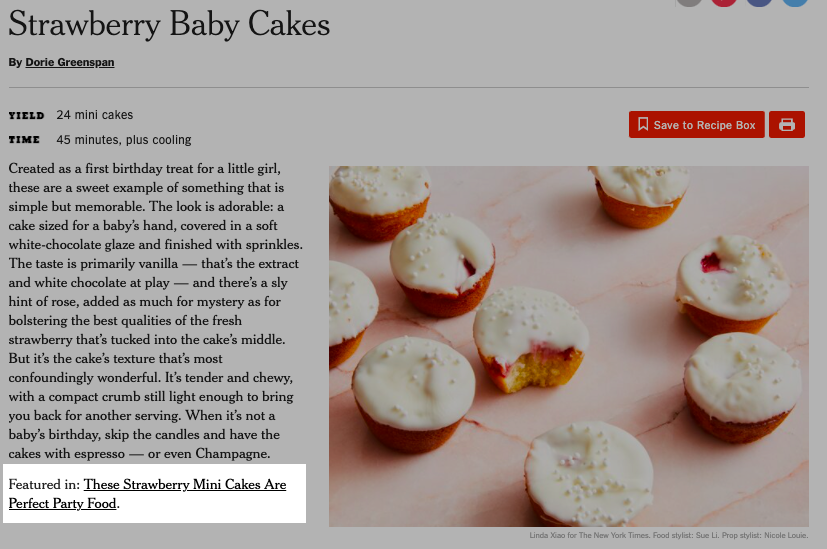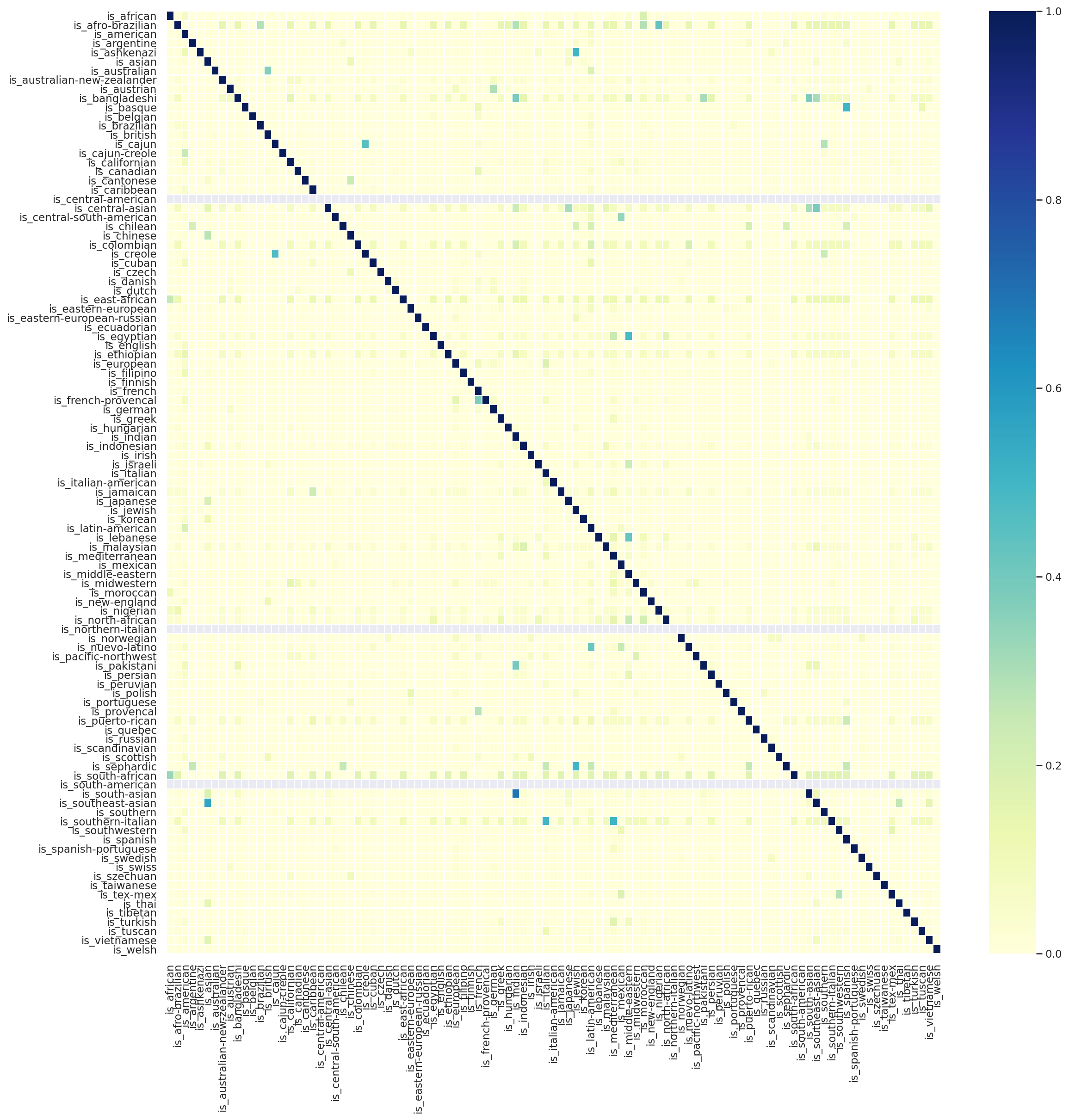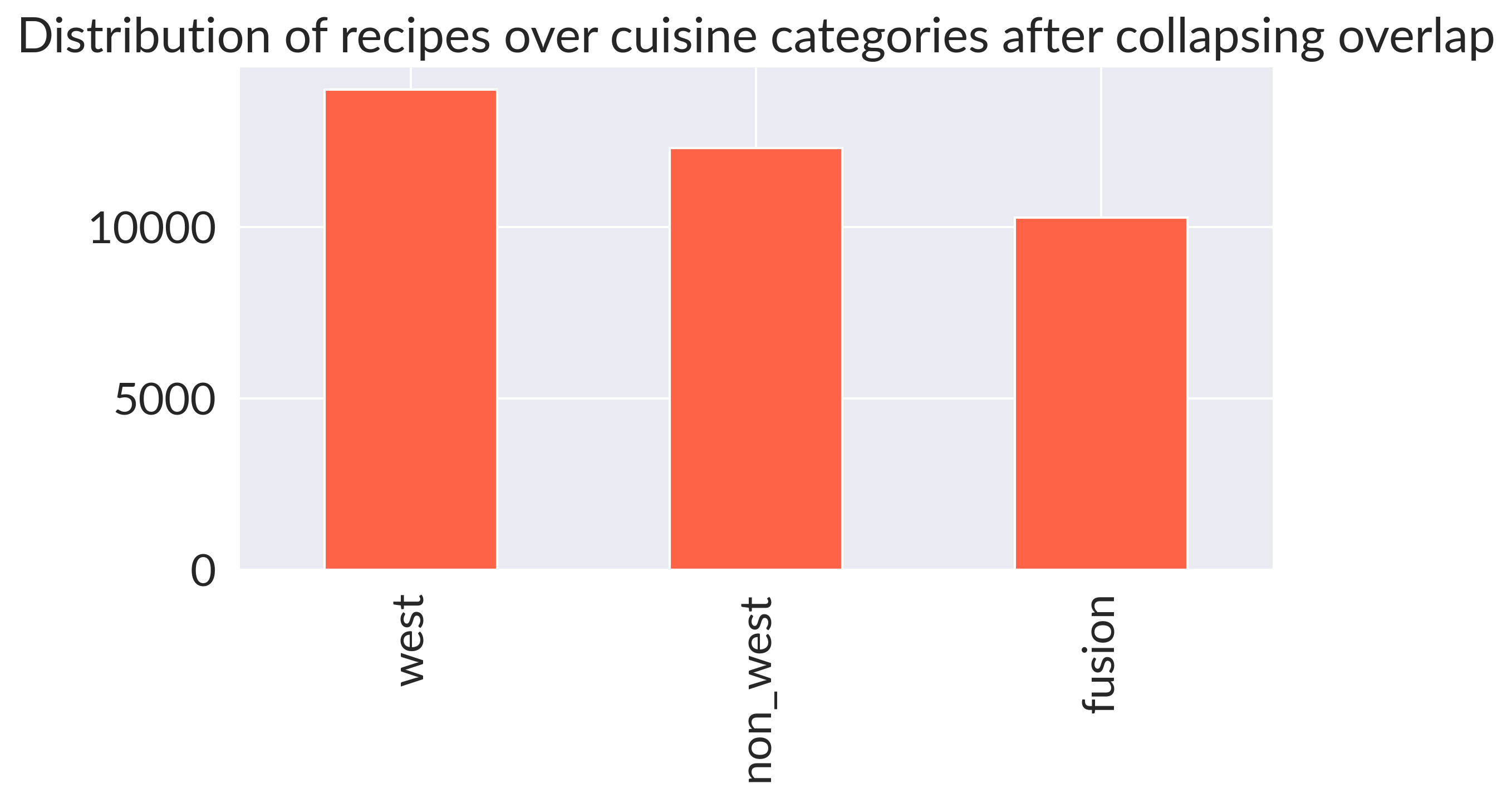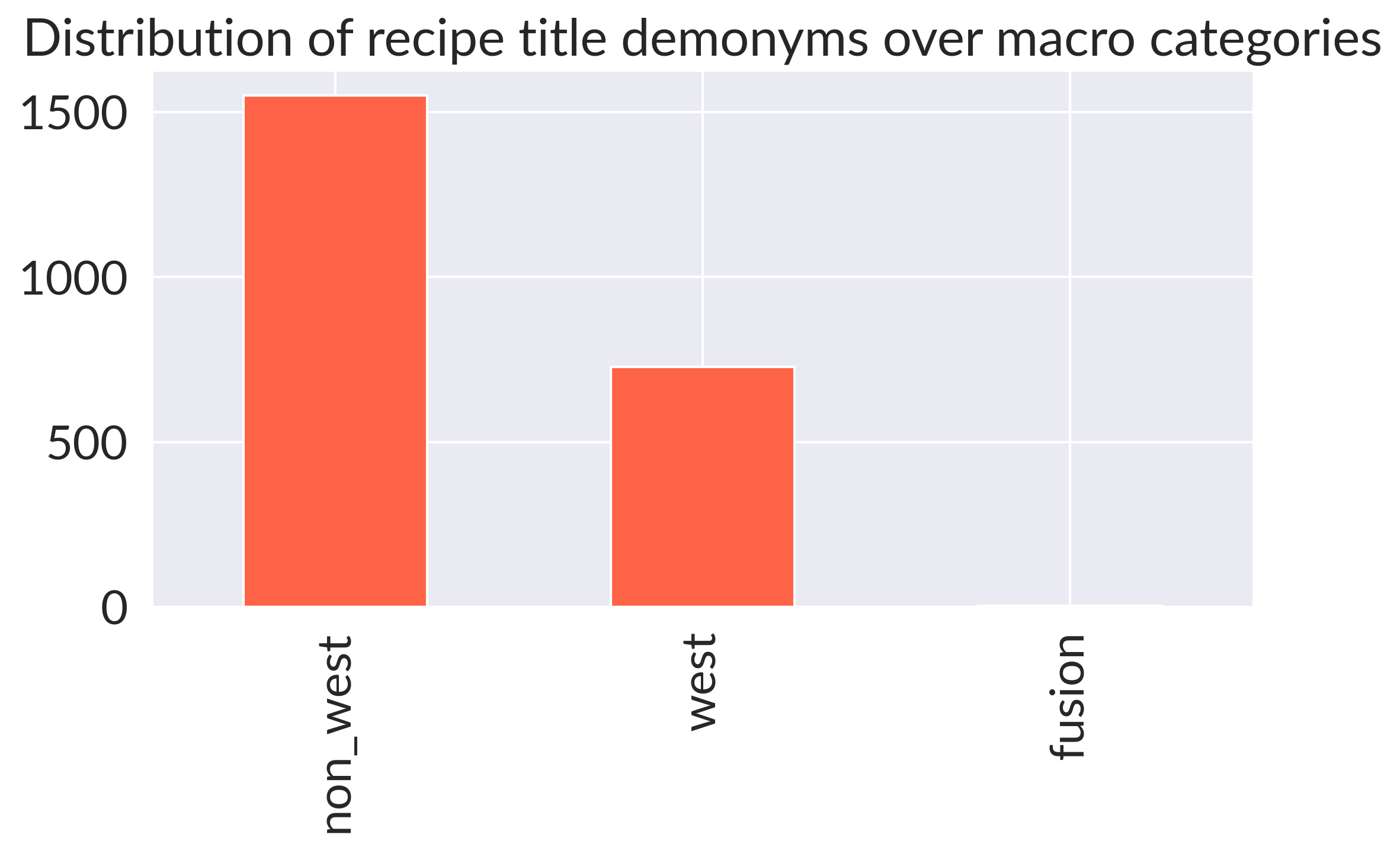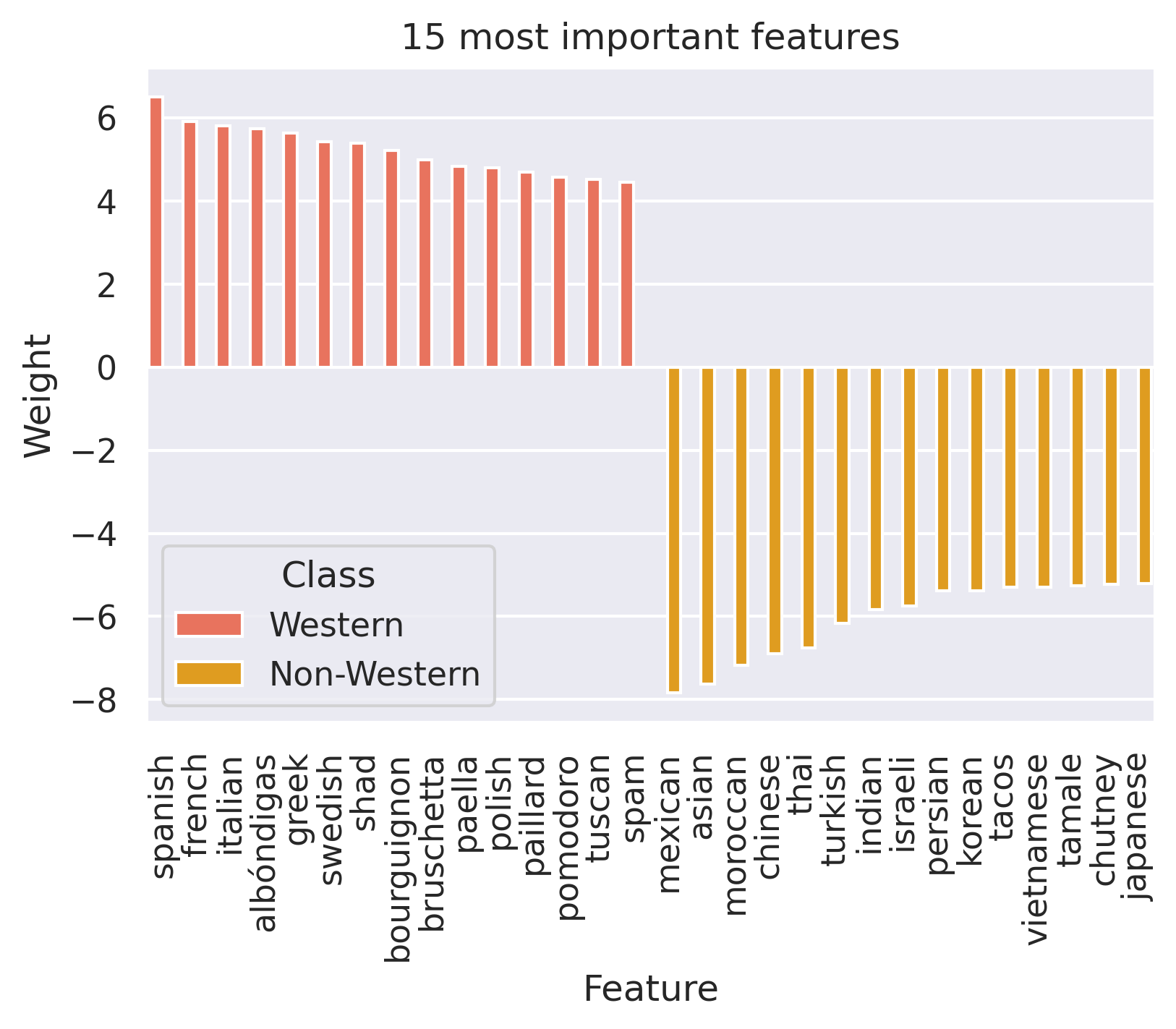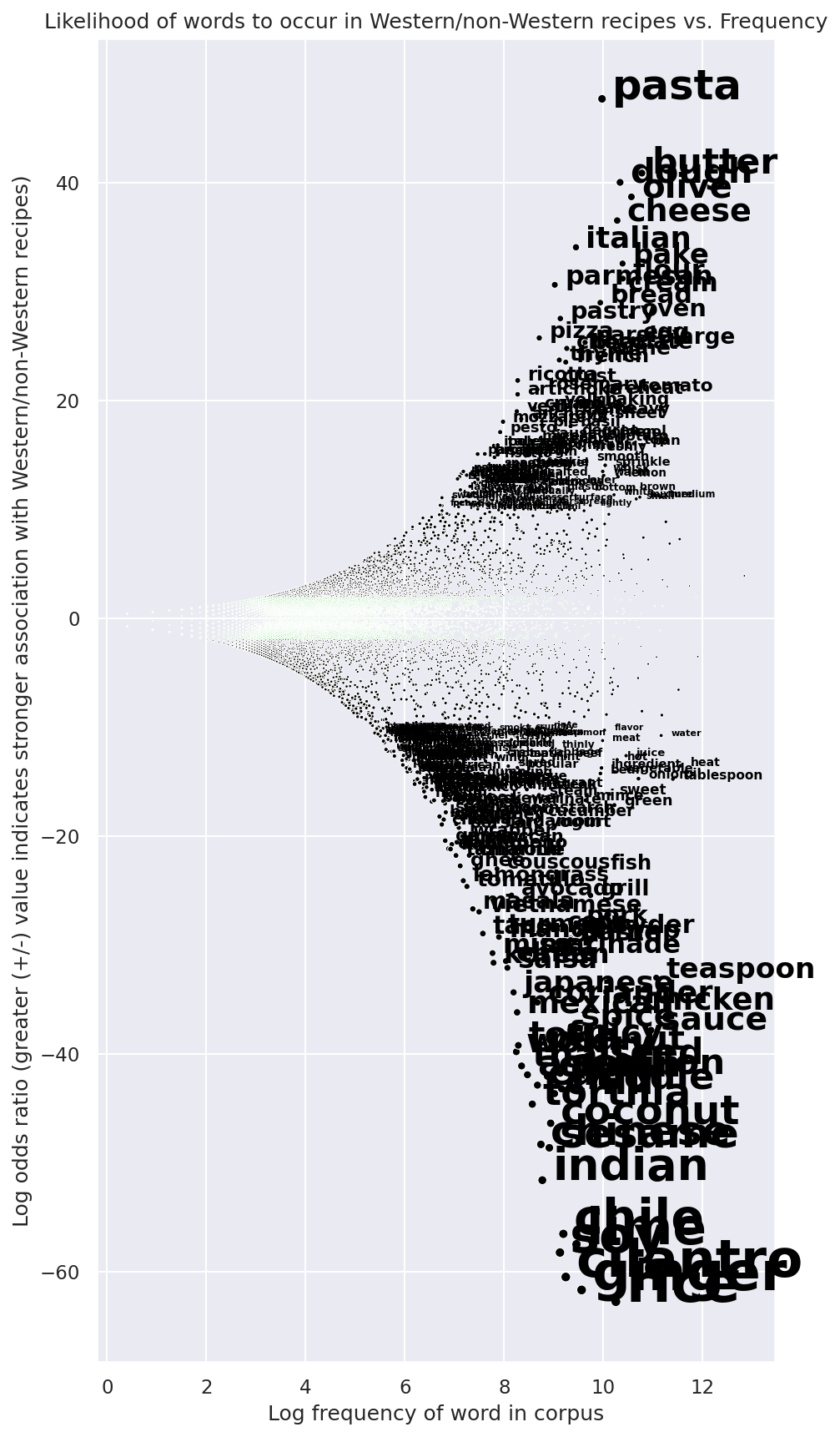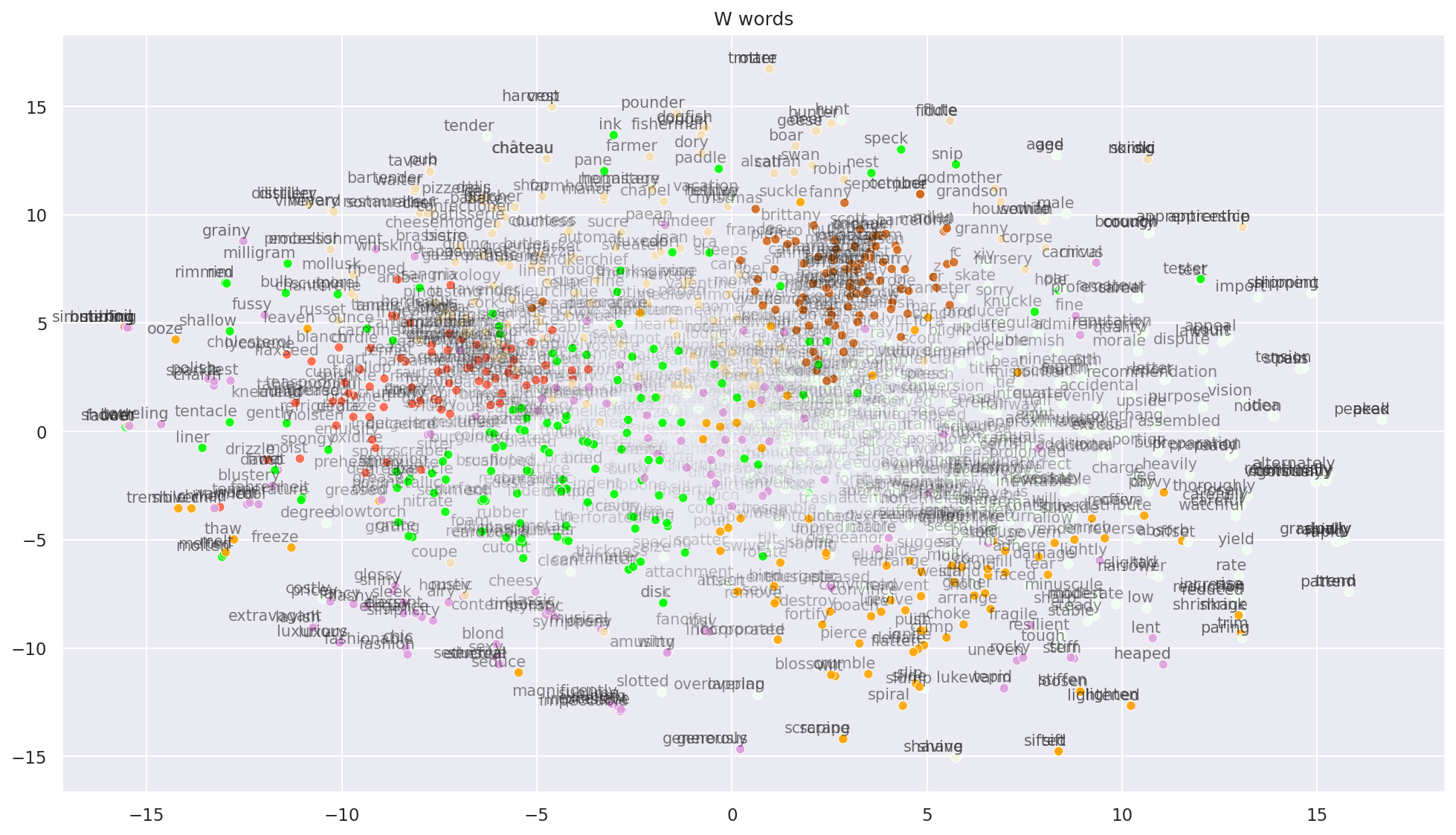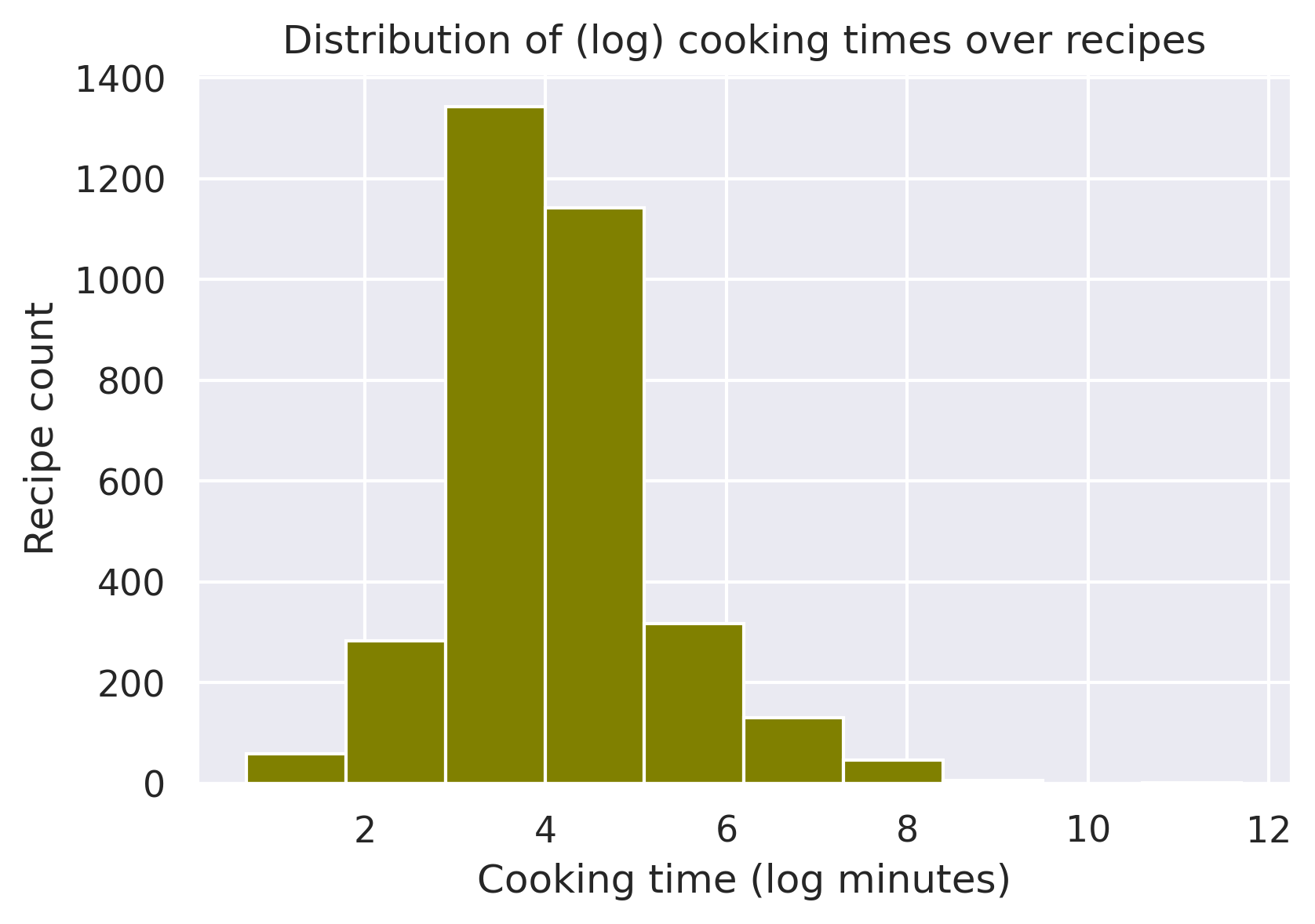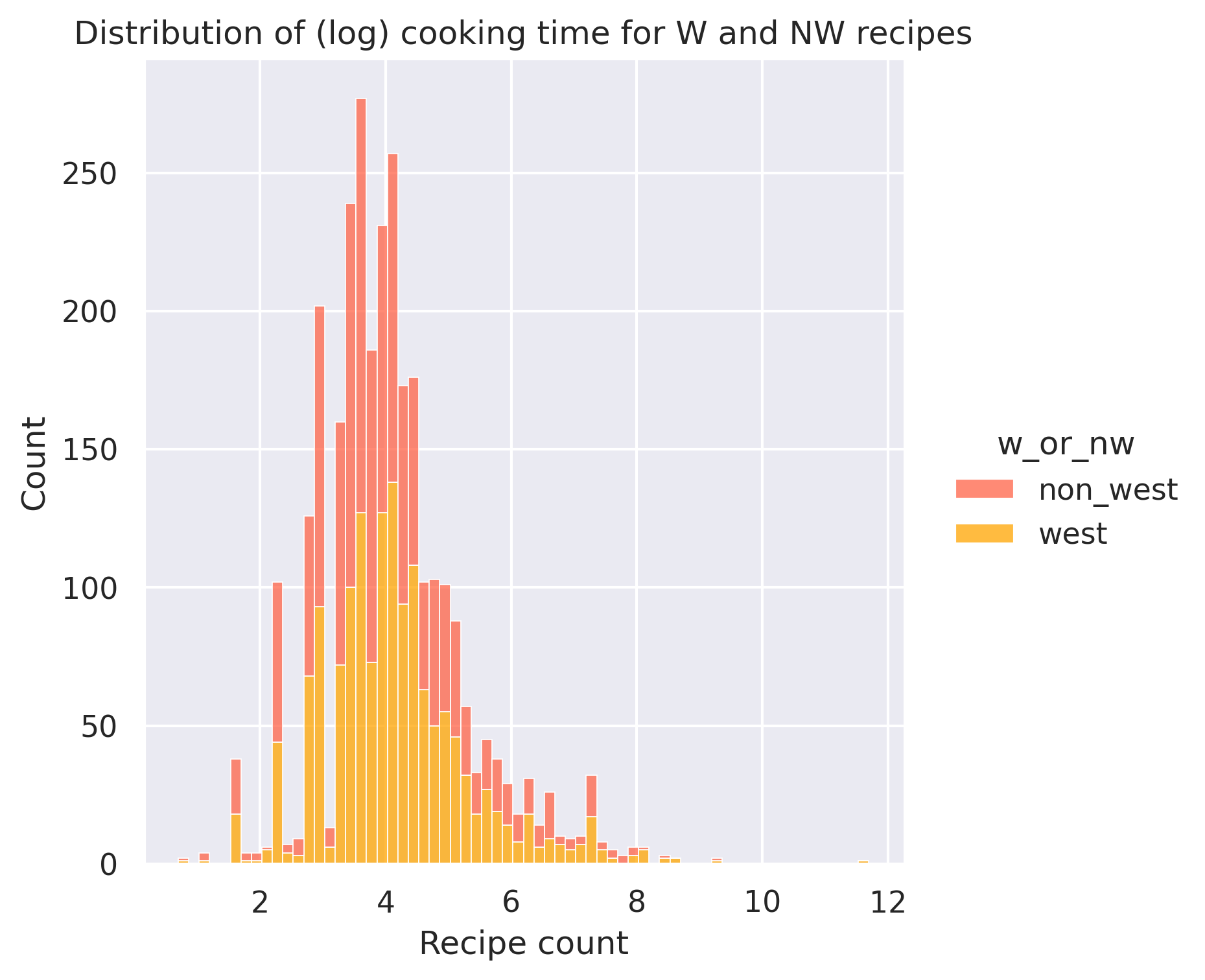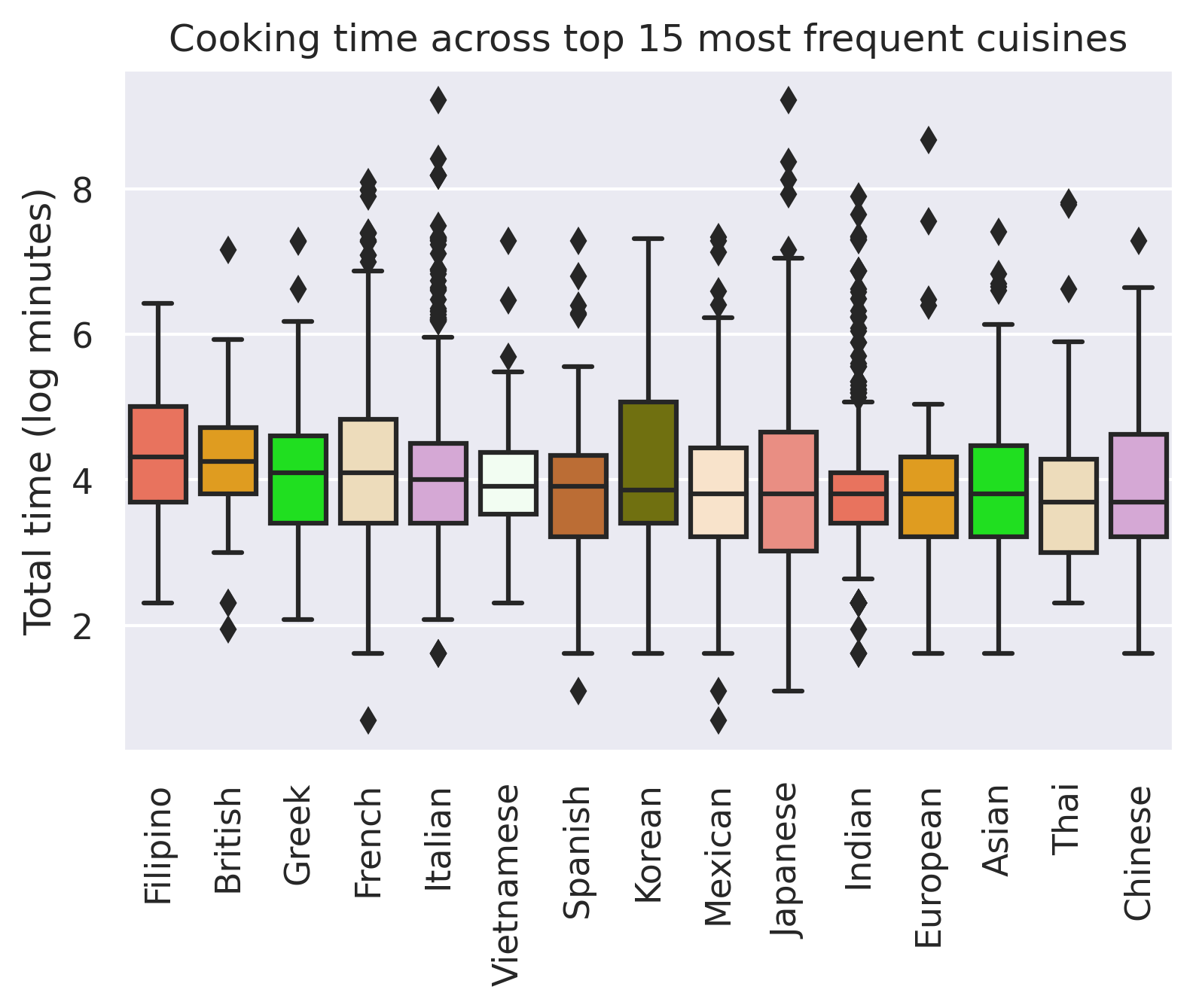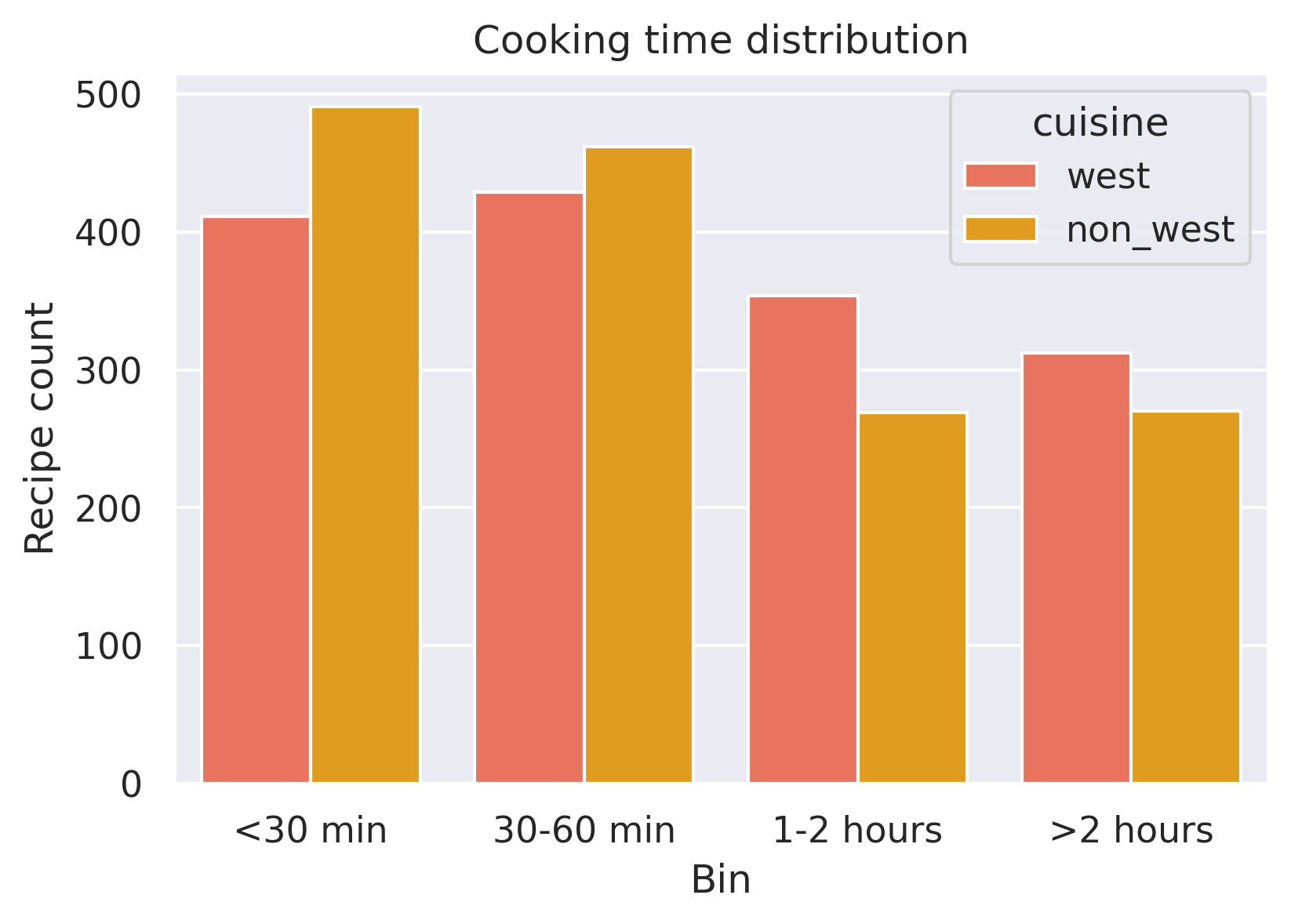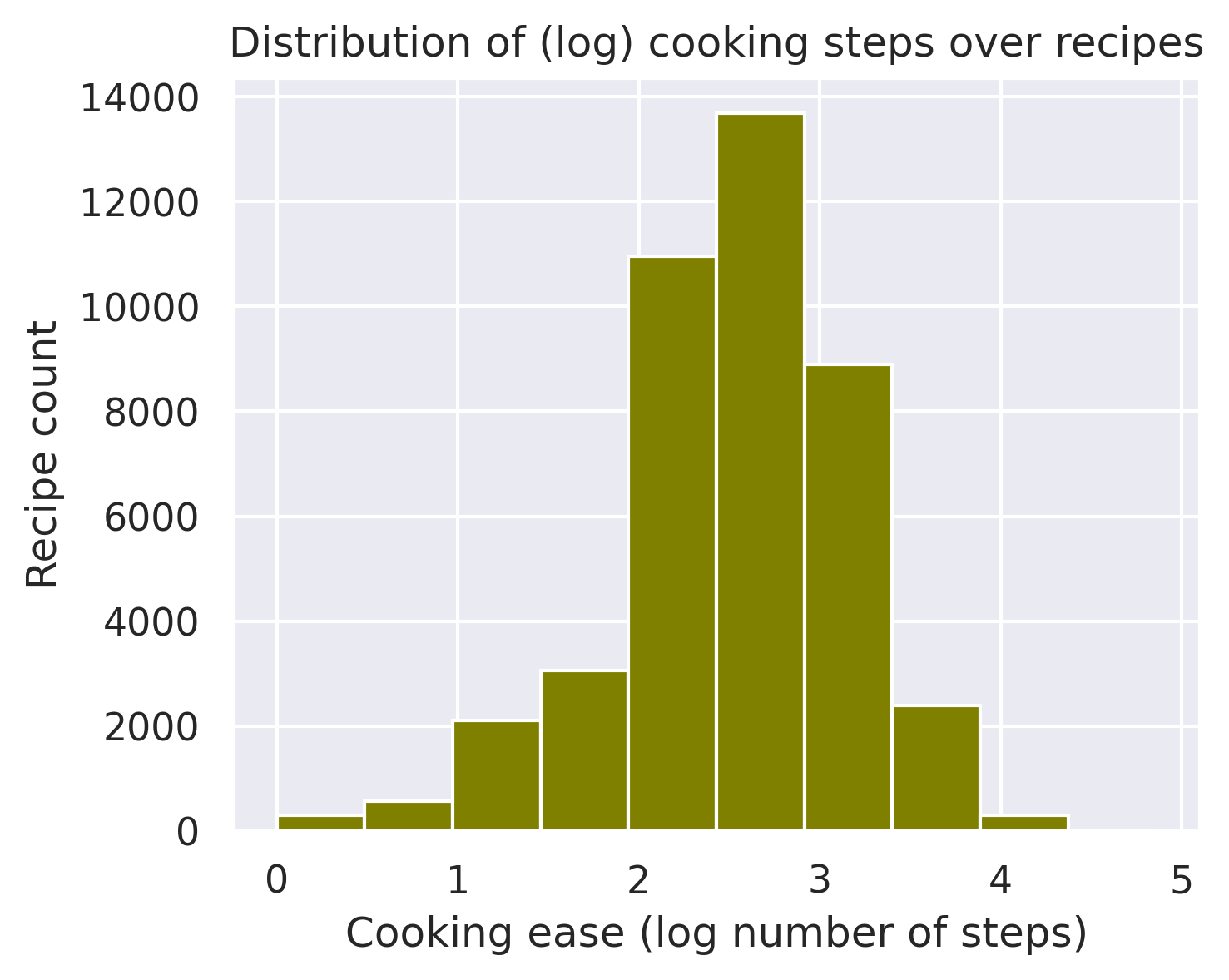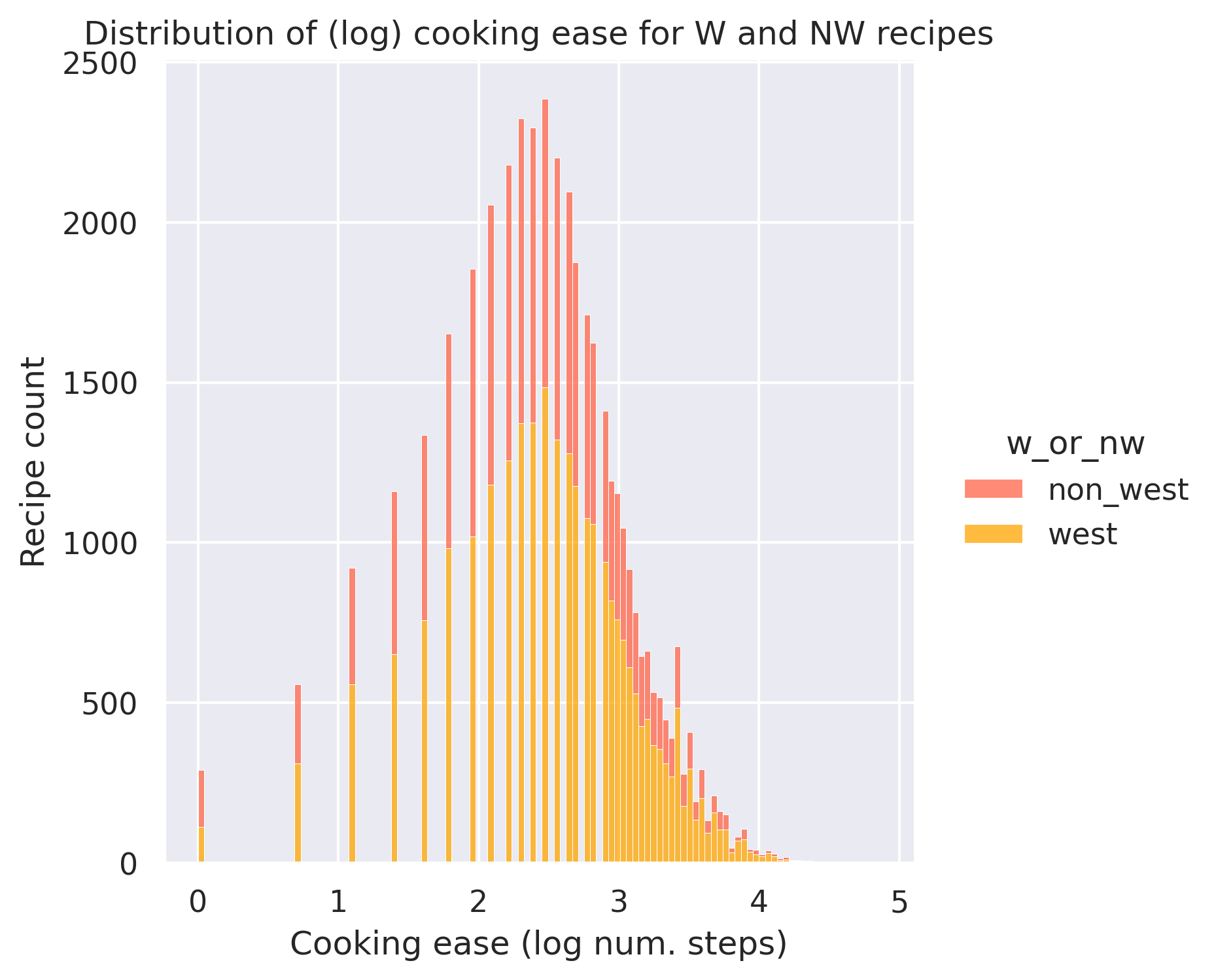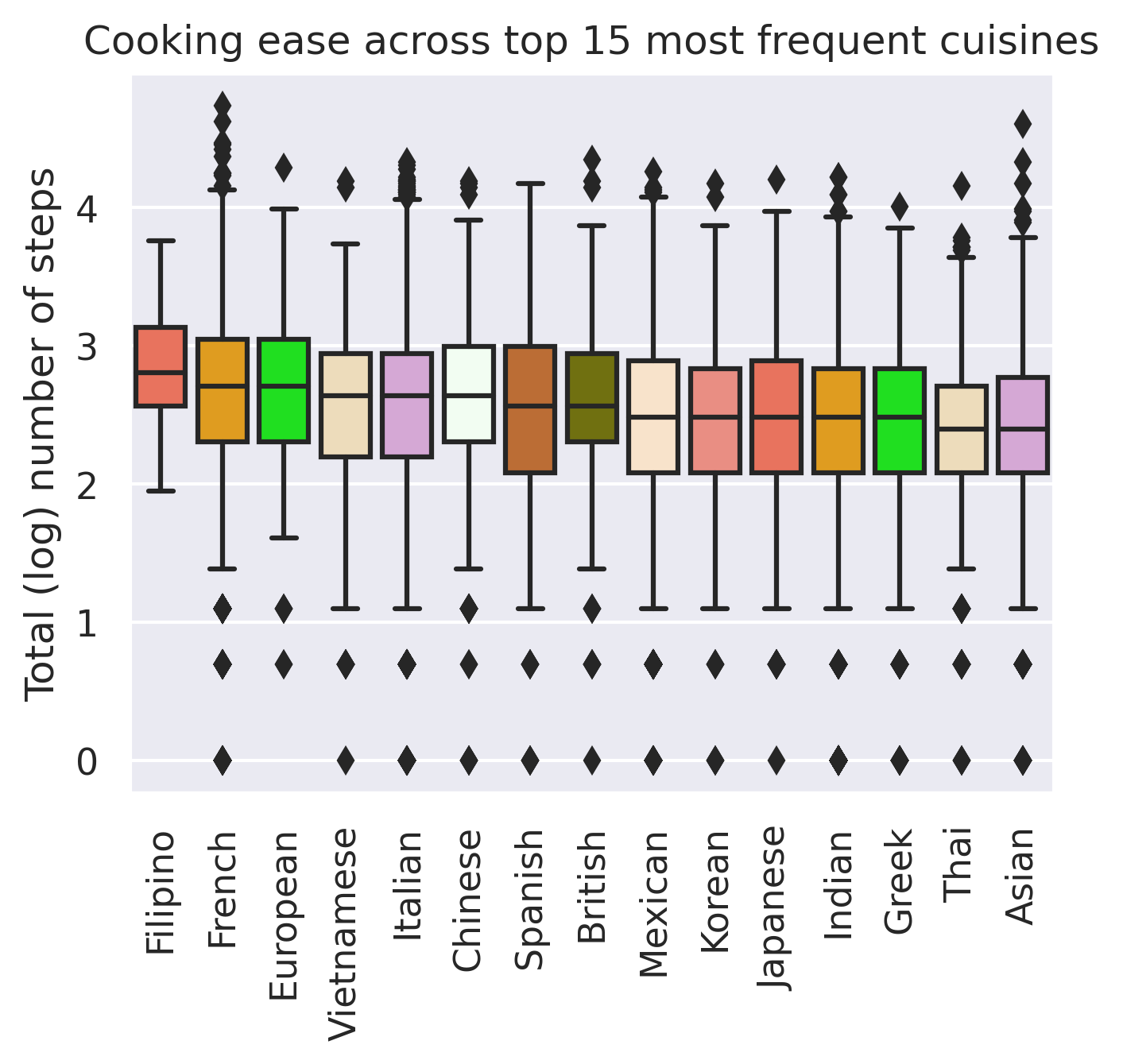Online recipe databases and food media websites such as New York Times Cooking and Bon Appetit have helped make cooking from a wide variety of cuisines an increasingly accessible activity. However, food media remains overwhelmingly white--for example, within the New York Times Cooking recipe archive, even non-Western recipes are written by a majority white group of authors.[1]
At the same time, the positioning of white authors as authority figures on non-white cuisines has increasingly been challenged, with critics pointing out the whitewashing and related harms that occur. In an interview[2] with Yewande Komolafe, a Nigerian recipe developer and author, fellow recipe developer Priya Krishna discusses some of the frustrations they have experienced as BIPOC members of food media (emphasis mine):
We lamented the extra labor that non-white people are often asked to do—from including **additional explanations** of dishes in the head note to finding imperfect **substitutions** for ingredients—in service of making their recipes more accessible to a white audience.
In addition to the implied white audience that they must consider when adding explanations that would be redundant for non-white audiences, Krishna also observes how non-Western recipes are often framed in ways to make them appear more accessible:
It's why modifiers like “simple” or “weeknight” that many publications (including BA) have historically added always make me laugh. Indian is my weeknight food. There's no weeknight dal and then dal. It's all just dal. **It’s as if our food needs to be made more approachable**.
I highly recommend reading the full interview, as there are many other observations that I think you'll find relatable. Meanwhile, the interview also made me wonder what empirical evidence I could find for the whitewashing of recipes, and more generally, what biases may be present in how food media talks about Western versus non-Western recipes.
Data¶
Overview¶
To empirically test some of Komolafe's and Krishna's hypotheses (such as non-Western recipes attracting words that signal "approachability") and to identify large-scale patterns in how food media's treatment of Western and non-Western recipes differ, I assembled3 a dataset of 53K recipes from New York Times Cooking (NYT), Bon Appetit (BA), Food52 (F52), Epicurious (EPI), and Serious Eats (SE).4 I chose these five websites for the simple reason that they are the ones I visit most frequently. For the NYT recipes, I additionally scraped the text of the longer articles that sometimes accompany recipes, in which the author reflects on their inspirations and process for creating the recipe (see the highlighted "Featured in" box in the screenshot below for an example).
from IPython.display import Image
Image("./figures/nyt_ex.png")
Let's plot the distribution of recipes over websites (using our food-themed color "palate": "tomato", "orange", "lime", "wheat", "plum", "honeydew", "chocolate", "olive", "bisque", and "salmon"). Apart from Serious Eats, the distribution of recipes is relatively even across the other 4 websites:
Image(filename="./figures/gen_dist.png", width = 500)
Getting cuisine labels¶
Using existing cuisine categories¶
For the analysis, I need to assign each recipe to the label of either non-Western (nw) or Western (w). Since the 5 websites in our dataset provide cuisine categories such as "Chinese" and "Italian" for the majority of recipes, I created a mapping from each of these cuisine categories to either nw or w to get a label for these recipes. I mapped cuisines onto either w or nw based on the simple heuristic that w is associated with the continents and countries of Europe, North America, and Australia, whereas nw is associated with the continents/countries of Asia, Africa, and South America.
In total, there are 103 unique cuisine categories in use across the 5 websites, shown below. A lot can be said about the idiosyncrasies of the cuisine classification that these websites show, such as the varying granularities (e.g., asian vs. californian), overlap (e.g., asian, japanese), and presence of fusion (e.g., tex-mex).
| Cuisine | Category |
|---|---|
| African | non_west |
| Afro-brazilian | non_west |
| American | fusion |
| Argentine | non_west |
| Ashkenazi | west |
| Asian | non_west |
| Australian | west |
| Australian-new-zealander | west |
| Austrian | west |
| Bangladeshi | non_west |
| Basque | west |
| Belgian | west |
| Brazilian | non_west |
| British | west |
| Cajun | fusion |
| Cajun-creole | non_west |
| Californian | fusion |
| Canadian | west |
| Cantonese | non_west |
| Caribbean | fusion |
| Central-american | non_west |
| Central-asian | non_west |
| Central-south-american | non_west |
| Chilean | non_west |
| Chinese | non_west |
| Colombian | non_west |
| Creole | fusion |
| Cuban | fusion |
| Czech | west |
| Danish | west |
| Dutch | west |
| East-african | non_west |
| Eastern-european | west |
| Eastern-european-russian | west |
| Ecuadorian | non_west |
| Egyptian | non_west |
| English | west |
| Ethiopian | non_west |
| European | west |
| Filipino | non_west |
| Finnish | west |
| French | west |
| French-provencal | west |
| German | west |
| Greek | west |
| Hungarian | west |
| Icelandic | west |
| Indian | non_west |
| Indonesian | non_west |
| Iranian | non_west |
| Irish | west |
| Israeli | non_west |
| Italian | west |
| Italian-american | west |
| Jamaican | non_west |
| Japanese | non_west |
| Jewish | fusion |
| Korean | non_west |
| Latin-american | non_west |
| Lebanese | non_west |
| Malaysian | non_west |
| Mediterranean | fusion |
| Mexican | non_west |
| Middle-eastern | non_west |
| Midwestern | fusion |
| Moroccan | non_west |
| Moroccan-north-african | non_west |
| New-england | fusion |
| Nigerian | non_west |
| North-african | non_west |
| Northern-italian | west |
| Norwegian | west |
| Nuevo-latino | non_west |
| Pacific-northwest | fusion |
| Pakistani | non_west |
| Persian | non_west |
| Peruvian | non_west |
| Polish | west |
| Portuguese | west |
| Provencal | west |
| Puerto-rican | non_west |
| Quebec | west |
| Russian | west |
| Scandinavian | west |
| Scottish | west |
| Sephardic | west |
| South-african | non_west |
| South-american | non_west |
| South-asian | non_west |
| Southeast-asian | non_west |
| Southern | fusion |
| Southern-italian | west |
| Southwestern | fusion |
| Spanish | west |
| Spanish-portuguese | west |
| Swedish | west |
| Swiss | west |
| Szechuan | non_west |
| Taiwanese | non_west |
| Tex-mex | fusion |
| Thai | non_west |
| Tibetan | non_west |
| Turkish | non_west |
| Tuscan | west |
| Vietnamese | non_west |
| Welsh | west |
| West-african | non_west |
For the purposes of this project, I was concerned only with the macro-categories of "Western" (w) and "non-Western" (nw), which are of course slippery in their boundaries as well, often due to the presence of cross-cultural exchange, immigration, and other sociocultural phenomena resulting in what is broadly termed "fusion". To further simplify matters, I excluded recipes belonging to categories that are inherently at the intersection of w and nw, such as Tex-Mex and Mediterranean.
Though the majority of recipes are categorized as exactly one cuisine, about $1/3$ are missing an associated cuisine category (all of the BA recipes fall into this bin), and a handful of recipes are categorized as multiple cuisines. Excluding one outlier recipe ("homemade adobo seasoning mix & dry rub", which is associated with 42 different cuisines according to F52), the number of associated cuisines for recipes in our dataset are shown below.
Image(filename="./figures/num_cuisine_cats_dist.png",width=700)
It would be a shame to discard the third of our data that is missing a cuisine label, so I trained a classifier to label this unlabeled data for the analysis.
For the recipes with too many cuisine labels, given that the cuisine categories occur at multiple granularities, I first performed some manual inspection to see whether some categories can be collapsed. A heatmap showing the overlap percentages (calculated as $\frac{N_{c1,c2}}{N_{c1}}$, where $N_{c1,c2}$ is the number of recipes tagged as both $c1$ and $c2$, and $N_{c1}$ is the number of recipes tagged as $c1$) is shown below.
Image(filename="./figures/cuisine_overlap.png",width=1000)
Overall, the overlaps make intuitive sense: for example, there is a moderate degree of overlap between is_jamaican and is_caribbean. At the same time, it seems that most recipes do not get tagged as all cuisines that are applicable, i.e., there is imperfect overlap between cuisines and their hypernyms (like is_tuscan and is_italian) as one would expect.
To find potentially collapsible cuisine categories, I applied a threshold of $75\%$: if $75\%$ of recipes categorized as $c1$ are also categorized as $c2$, then I used a single label, $c2$, to label all recipes categorized as either $c1$ or $c2$. This scheme allows me to avoid counting a cuisine from a single macro-category twice, and resulted in the merging of the following categories:
Central-American,Latin-American,South-AmericanNorthern-ItalianandItalian
The resulting distribution of recipes over different cuisines is highly skewed, with recipes categorized as Italian, American, and French making up roughly 40% of all categorized recipes, as shown below:
Image(filename="./figures/dist_20_freq_cuisines.png",width=800)
Now that Ie have collapsed cuisine categories where possible, for the remaining recipes with multiple cuisine labels, I'll use the following labeling scheme:
- Case 1: majority vote with the threshold at $0.67$ (e.g., a recipe with $2/3$ or more non-Western associated cuisines would receive the label
nw) - Case 2: tie or no two-thirds majority--assign the label
ffor fusion, which I will exclude from later analysis
The resulting distribution over macro cuisine category labels is shown below:
Image(filename="./figures/dist_macro_cuisine_cats.png",width=500)
Comparing cuisine category-derived labels with demonym-derived labels¶
As a sanity check, let's compare our macro-category labels to explicit cues in the form of demonyms[5] that are present in recipe titles, e.g. "Moroccan Lamb Stew". About $\frac{2281}{53946}=4.2\%$ of recipes have a demonym in the title. I used a manually created mapping of demonyms onto the macro-categories of w and nw, as follows:
| Demonym | Category |
|---|---|
| Afghan | non_west |
| Africa | non_west |
| Alaskan | west |
| Algerian | non_west |
| America | west |
| American | west |
| Andalusian | west |
| Argentine | non_west |
| Armenian | non_west |
| Asia | non_west |
| Australian | west |
| Austrian | west |
| Baja | non_west |
| Bangladeshi | non_west |
| Bavarian | west |
| Belgian | west |
| Bengal | non_west |
| Bengali | non_west |
| Bohemian | west |
| Bosnian | west |
| Brazilian | non_west |
| Breton | west |
| Bulgarian | west |
| Canadian | west |
| Cantabrian | west |
| Chilean | non_west |
| Colombian | non_west |
| Corsican | west |
| Cretan | west |
| Cuban | non_west |
| Czech | west |
| Dalmatian | west |
| Dominican | non_west |
| Ecuadorian | non_west |
| Egyptian | non_west |
| Ethiopian | non_west |
| Galician | west |
| Genovese | west |
| Georgian | west |
| German | west |
| Ghanaian | non_west |
| Guatemalan | non_west |
| Haitian | non_west |
| Hungarian | west |
| Hyderabad | non_west |
| Indian | non_west |
| Indonesian | non_west |
| Iranian | non_west |
| Israel | non_west |
| Italian | west |
| Jamaican | non_west |
| Japanese | non_west |
| Javanese | non_west |
| Jordanian | non_west |
| Laotian | non_west |
| Liberian | non_west |
| Libyan | non_west |
| Ligurian | west |
| Lithuanian | west |
| Macedonian | west |
| Maharashtrian | non_west |
| Majorcan | west |
| Malagasy | non_west |
| Malaysian | non_west |
| Mexican | non_west |
| Moroccan | non_west |
| Nicaraguan | non_west |
| Nigerian | non_west |
| Norman | west |
| Parisian | west |
| Persian | non_west |
| Peruvian | non_west |
| Phoenician | fusion |
| Pole | west |
| Qatar | non_west |
| Roman | west |
| Russian | west |
| Salvadoran | non_west |
| Sardinian | west |
| Serbian | west |
| Sicilian | west |
| Silesian | west |
| Singaporean | non_west |
| Slovak | west |
| Somali | non_west |
| Syrian | non_west |
| Tahitian | non_west |
| Texan | west |
| Thai | non_west |
| Tunisian | non_west |
| Ukrainian | west |
| Umbrian | west |
| Uzbek | non_west |
| Uzbekistani | non_west |
| Valencian | west |
| Venezuelan | non_west |
| Victorian | west |
Of those recipes with a demonym, the majority are nw demonyms:
Image("./figures/dist_macro_demonym_cats.png",width=500)
As we would expect, only a very small percentage of recipes with demonyms are categorized in the opposite category to their demonym: $1.8\%$ for recipes with non-western demonyms; $1.6\%$ for recipes with western demonyms.
Image("./figures/dem_cuisine_cat_confusion_matrix.png",width=600)
Some examples of disagreement between demonyms in a recipe and a website's cuisine categorization for a recipe include the following:
| Recipe title | Demonym-based label | Cuisine-category-based label |
|---|---|---|
| Hand Held Syrian Spinach Pies | nw |
w |
| Roasted Japanese Eggplant With Crushed Tomato, Pecorino and Thyme | nw |
w |
| Vincent Hodgins's Moroccan Spiced Gravlax | nw |
w |
| Fried Rice with Canadian Bacon | w |
nw |
| An American Vegetable Soup | w |
nw |
As these examples of disagreement show, there are genuine reasons for considering such recipes as both nw and w. However, for better consistency, I ignored the signal provided by the demonym and continued to use solely the cuisine-categories to label these recipes.
Finally, there are 267 recipes that are missing a cuisine category but which do have a demonym, so in this case, we may as well label these recipes based on the macro-category of their demonyms. The final distribution of recipes over macro-categories is shown below:
Image("./figures/dist_macro_cuisine_cats_final.png",width=600)
I saved these labels for later use, including training the classifier.
Classifier¶
Training and eval data¶
I experimented with several sources of training data for a logistic regression classifier:
| Name | Description | Size |
|---|---|---|
recipes_labeled |
a random selection of $2/3$ the labeled data from recipes (labels from the macro_cuisine_cat column) |
$16018$ |
wiki |
data from the Wikipedia lists https://en.wikipedia.org/wiki/European_cuisine and https://en.wikipedia.org/wiki/Asian_cuisine to correspond to w and nw dishes, respectively[6] |
$8293$ |
recipes_labeled_nouns |
same as recipes_labeled, keeping just the nouns from the recipe names (after POS-tagging with SpaCy) |
$16018$ |
wiki_nouns |
same as above, but with wiki as the base dataset |
$8293$ |
I also created several different eval/dev sets:
| Name | Description | Size |
|---|---|---|
recipes_labeled |
the remaining $1/3$ split of recipes_labeled |
$7783$ |
demonyms |
a subset of recipes with demonyms in the titles | $235$ |
manual |
a manually-labeled subset of recipes_labeled with recipes from BA |
$169$ |
<X>_nouns |
each of the 3 datasets above, restricted to noun lemmas only |
Some notes on the data splits:
- Sizes shown are after excluding recipes with a fusion label.
- I did not include
wikidata in any eval or dev sets because the ultimate goal is to label non-Wikipedia recipes. - Observations on
wikidata:- There is some overlap ($N=113$) in
w/nwdishes due to some common food terms as well as categories spanning Western and non-Western cuisine. - e.g.: "beer", "caviar", "fruits", "ice cream", "kasha", "noodle soups with meat"
- I included the overlapping data in the training set (so, e.g., "ice cream" occurs twice, once with each label).
- There is some overlap ($N=113$) in
- Since BA does not have any cuisine labels, I created labels for the eval/dev sets via manual annotation. For this reason, there is also no BA data in the training set.
- I set all random seeds to 42.
And I applied the following pre-processing steps:
- remove punctuation and non-alpha characters (keeping diacritics)
- lowercase
- deduplicate the training split of
recipes_labeledfrom anything contained inmanualanddemonyms
Training a logistic regression classifier¶
Next, I trained logistic regression (LR) classifiers using the scikit-learn library, experimenting with all the training datasets and all possible combinations of word- and character-level features, with n-gram ranges of 1- to 4-grams for word-level features. I got the best cross-validated dev accuracy (across all dev sets) using recipes_labeled as training data and word-level features up to trigrams in combination with char-level features.
I then did a grid-search over the following hyperparameters, again with recipes_labeled as the eval and training sets:
| Hyperparameter | Values | Best value |
|---|---|---|
solver |
['newton-cg', 'lbfgs', 'liblinear'] |
'lbfgs' |
c_value |
[100, 10, 1.0, 0.1, 0.01] |
10 |
max_iter |
[100, 200, 500, 1000] |
100 |
random_state |
[1639, 18024, 16049, 14628, 9144] (5 randomly generated seeds) |
1639 |
A more detailed performance of the best-performing classifier is shown below (evaluated on the test split of recipes_labeled):
| precision | recall | f1-score | support | |
|---|---|---|---|---|
| non_west | 0.92 | 0.88 | 0.90 | 1958 |
| west | 0.92 | 0.94 | 0.93 | 2712 |
| accuracy | 0.92 | 4670 | ||
| macro avg | 0.92 | 0.91 | 0.92 | 4670 |
| weighted avg | 0.92 | 0.92 | 0.92 | 4670 |
Moreover, the classifier does pretty well on the manually-labeled test set, especially considering that this eval set comes entirely from BA-data not represented in the training data. Although performance on nw recipes is worse, the overall accuracy is still better than a majority-class baseline ($\frac{140}{169}=82.8\%$).
| precision | recall | f1-score | support | |
|---|---|---|---|---|
| non_west | 0.53 | 0.90 | 0.67 | 29 |
| west | 0.97 | 0.84 | 0.90 | 140 |
| accuracy | 0.85 | 169 | ||
| macro avg | 0.75 | 0.87 | 0.78 | 169 |
| weighted avg | 0.90 | 0.85 | 0.86 | 169 |
Qualitative error analysis¶
Next, I examined the incorrect predictions ($N=384$) and noticed some recurring misclassification types that largely make sense.
| Error type | Examples | Justification |
|---|---|---|
| fusion recipes | "miso pork bread pudding", "shichimi togarashi granola", "super easy naan pizza " | there are conflicting signals, e.g. "miso", "shichimi", "naan" are nw but "pudding", "granola", and "pizza" are w |
| unigram recipes | "ayran", "cholay" | these recipes are not represented in the training data and contain no signal in the form of adjectives or ingredients for the classifier to use |
| vague recipes | "chicken stew", "roast pork", "spring soup" | these recipes are inherently impossible to classify without more context |
We can also examine the feature weights to see which word- and char-features are most associated with each class. The top 15 features from each class are shown below.
Image("./figures/15_top_features.png",width=800)
For the w label, we notice many demonyms and words associated with Spanish and Italian cuisine ("paella", "bruschetta"). This is unsurprising, given the frequency of Spanish and Italian recipes in the training data.
For the nw label, we also notice many demonyms as well as some common dishes associated with the top-weighted demonyms ("tacos", "tamale", "chutney").
Considering the intuitive errors and feature weights, I was pretty happy with the classifier's performance, and proceeded to the analysis with the fully-labeled dataset of recipes.
Analysis¶
I first applied the classifier to the unlabeled portion of recipes in order to get a prediction for macro_cuisine_cat for all datapoints. I conducted analysis on the fully labeled recipes dataset (combining existing website cuisine-category- and demonym-based labels and model predictions), as well as the a priori labeled subset of recipes (i.e., excluding model predictions), finding that similar patterns hold. All subsequent plots and figures are thus based on the full dataset.
Next, I used SpaCy (https://spacy.io/) to tokenize, lemmatize, part-of-speech tag, and dependency parse all text data (recipe title, ingredients, directions, free text, and full text of the associated "featured in" article in the case of some NYT recipes).
We can now do a few different kinds of analysis:
- General: log odds ratios to determine which words are most associated with
wvs.nwrecipes - Approachability analysis: Do
nwrecipes get described more often as "fast", "easy" etc. to make them more approachable, as Yewande and Priya hypothesized?
General words¶
Using the results from spaCy pre-processing, I calculated the log-odds-ratio (LOR) for each word occurring with a Western vs. a Non-Western recipe using an informative Dirichlet prior (following Monroe et al. (2009)[7]).
Image("./figures/gen_deltas.png",width=800)
Even after filtering to words with a significant LOR value, there are many which reflect inherent differences in terms of ingredients, cooking techniques, and proper nouns that exist between W and NW cuisine (for example, "ghee", "wok", and "indian" are unsurprisingly more associated with NW cuisine, and "pasta", "italian", and "bake" are more associated with W cuisine).
Thus, I used WordNet (https://wordnet.princeton.edu/) to compile a set of ingredients (hyponyms of the synsets ingredient.n.03, food.n.01, food.n.02, carbohydrate.n.01, edible_fat.n.01, edible_seed.n.01, herb.n.01, herb.n.02), cooking-related terms (hyponyms of kitchen_utensil.n.01, tableware.n.01), and proper nouns (hyponyms and member meronyms of state.n.04, country.n.02) to additionally filter out. The resulting log odds ratio plot for words that remain is shown below.
Image("./figures/gen_deltas_post_filtering.png",width=800)
Now that we have identified the words that are most associated with each cuisine type beyond these inherent cuisine characteristics, **what patterns do we see emerge among each cuisine type's words?**
To answer this question, I clustered the words into semantically coherent groups by retrieving word embeddings (GoogleNews, 300 dimensions) for each word, then applying KMeans clustering (I chose num_clusters=7 after manual inspection). The visualized results are shown below for each cuisine type:
Image("./figures/NW_clusters.png")
Image("./figures/W_clusters.png")
From manual inspection of the words contained in each cluster, I came up with over-arching semantic descriptions for each cuisine type's clusters. For both Western and non-Western recipes, POS-tag-related clusters emerge: both cuisine types have separate clusters for (what are predominantly) verbs and adjectives. Furthermore, both cuisine types have a cluster for proper nouns, as well as a cluster for common nouns that are unrelated to any of the other noun-clusters.
However, within similar clusters (e.g., adjectives, verbs, common nouns), we observe many contrasts between the two cuisine types, and we also observe that there are clusters unique to one cuisine type and not the other.
For example, one of the clusters unique to non-Western recipes consists of words relating to culture, family, and ethnic identity, e.g.: "mom", "family", "ancestor", "community", "paternal", "bride", "language", "indigenous", "colonial", "immigrant", "diaspora", "homesickness", "nationality". Many of the words in this cluster are suggestive of "immigrant story"-type narratives, suggesting that recipe writers tend to couch nw foods in terms of their ethnic symbolism.
On the other hand, Western recipes words have a cluster relating to terms indexing luxury ("gastronomic", "hotel", "butler", "gourmet") and rusticity ("countryside", "village", "shepherd", "farmhouse", "harvest", "forest", "hearth", "hunter", "peasant", "rustic"), and terms residing in the overlap ("manor", "heirloom") (it is perhaps also no coincidence that rusticity and the use of local, seasonal ingredients currently have significant cachet in fine dining).
Never mind that Western foods are also ethnic artifacts and intertwined in Western ethnic identities, or that non-Western recipes are also cooked by peasants and shepherds living in farmhouses and forests in their rustic countryside villages--it appears that for American food media, NW foods tend to be symbols of their cultures and the immigration that brings their cultures into relief, whereas W foods tend to be symbols of an upscale, farm-to-table aesthetic.
A similar bias is reflected in the Adjective clusters for each cuisine type: wherease Western recipes attract adjectives indexing fine dining such as "seductive", "stylistic", "grownup", "impressive", "timeless", "extravagant", "lavish", "fussy", "sexy", "sublime", "fashionable", "sleek", "fine", "fancy", "classic", and "elegant", non-Western recipes attract adjectives like "cheap", "affordable", and "everyday".
Also interesting is the greater presence of adjectives and lemmas involved in comparison ("different", "unfamiliar", "reminiscent", "exotic") within non-Western recipes--this suggests that Western recipes tend to be regarded as the default, against which recipe writers compare non-Western foods, ingredients, techniques etc.
Finally, it is interesting to note that adjectives relating to taste and smell (especially some that carry negative connotations) are more likely to be found in non-Western recipes (see the 'Foods and flavors' cluster, and some entries in the main Adjectives cluster, e.g. "bold", "funky"). Of course, this bias might be partially explained by the use of many flavorful ingredients and spices in non-Western cuisine that (stereotypically) blander Western cuisine lacks, but also by the subjective perception of non-Western cuisine as less bland.
NW clusters¶
| Proper nouns | Common nouns | Specialized food terms | Culture, family, nationality | Foods and flavors | Adjectives | Verbs |
|---|---|---|---|---|---|---|
| dal | steam | wrapper | southeast | spicy | fiery | skewer |
| char | heat | oriental | lunar | grill | thinly | shred |
| turkish | pressure | kernel | grocery | marinate | shredded | ferment |
| shanghai | dipping | charcoal | coal | masa | addictive | soak |
| latin | mortar | fresco | supermarket | aromatic | exotic | stir |
| mam | market | matchstick | mom | glutinous | grind | sate |
| monterey | many | seaweed | cultural | crispy | refreshing | turn |
| msg | lid | rinse | southwestern | cashews | authentic | condense |
| tet | traditional | devein | imperial | smoky | bright | combine |
| taiwanese | available | asafetida | comedian | flavor | favorite | blacken |
| bangkok | part | pod | indigenous | vegetarian | dim | splutter |
| lee | healthy | fermented | family | garnish | easy | burn |
| taiwan | through | thigh | eastern | flavorful | wisp | squeeze |
| philippine | pad | pestle | westerner | boneless | staple | find |
| newman | smoke | lotus | waterman | tandoor | comforting | adjust |
| yuan | own | asafoetida | colonial | salty | numbing | sit |
| lakshmi | national | cobs | polo | shiitake | milder | darken |
| sin | fire | clay | canton | cob | superman | distil |
| beijing | skirt | cleaver | monsoon | delicious | bold | sputter |
| anaheim | different | slurry | pasha | microwave | silken | shun |
| amarillo | distinct | cashew | maternal | eat | reminiscent | enjoy |
| ras | unique | cellophane | shark | tangy | colorful | inspire |
| caribbean | glove | agave | immigrant | pungent | amazing | replenish |
| seoul | section | barberry | religious | cook | funky | ram |
| bombay | super | shimmer | grocer | tasty | eyed | subscribe |
| chi | smoking | bonnet | dynasty | nutritious | incendiary | prepare |
| muslim | batch | cactus | pantry | cuisine | awesome | zap |
| tokyo | sum | finely | communal | spiciness | fantastic | serve |
| fresno | street | blister | diaspora | slurp | satisfying | add |
| chen | sticker | drumstick | pastor | skinless | script | subdue |
| lexington | online | floret | professor | cooked | steamy | vaporize |
| agua | smash | tilapia | tiger | vegan | tedious | flee |
| delhi | less | ml | editor | broil | ubiquitous | impart |
| mumbai | prep | fungus | canal | sizzle | familiar | grow |
| rajas | helpful | stalk | peninsula | steaming | fusion | cater |
| pacific | aside | perilla | household | sodium | picky | omit |
| tam | patrón | massage | subcontinent | grilling | mellow | chronicle |
| istanbul | everyday | nigella | trader | sear | subtle | submerge |
| xian | spam | cassia | refugee | basting | unseasoned | toss |
| zhou | vendor | fragrance | cub | vinegary | surprising | mop |
| chang | influence | lacquer | palace | dhal | vibrant | meld |
| han | contact | bruise | pup | gingery | palatable | wipe |
| hass | flushing | protein | lam | momos | squishy | discard |
| latino | carousel | packet | hawker | accompaniment | bumpy | customize |
| arabic | scramble | pleat | ancestor | rotisserie | shrimpy | inoculate |
| lan | trading | valve | coastal | pomfret | drunken | take |
| krishna | similar | filé | minister | yummy | unfamiliar | buy |
| info | leftover | tan | queen | unsweetened | snappy | build |
| hindi | indirect | hatch | paternal | sambar | auspicious | encapsulate |
| hindu | brand | briquette | archipelago | seared | chunky | explode |
| mr | lean | fin | unity | marinating | fleshed | deteriorate |
| diaz | once | soman | bride | sourness | moody | emit |
| ron | various | musky | prosperity | grilled | lech | introduce |
| li | commonly | aguas | uncle | flavourful | fun | oversimplify |
| naomi | able | bead | political | aroma | unrefined | transliterate |
| negro | can | unripe | phonetic | baste | opaque | unzip |
| lin | weeknight | jar | westernize | charred | crooked | sell |
| ngo | mesh | acidic | gringo | soupy | numb | blot |
| buddhist | cast | ginkgo | iguana | gobi | lively | wear |
| vega | preference | mosquito | eatery | curried | shriek | drain |
| rick | also | medicinal | immigrate | minced | intriguing | sterilize |
| kyoto | slow | diagonally | language | sweetness | blasphemous | recombine |
| punjab | win | kelp | student | capsicum | rare | stimulate |
| zulu | preserved | berber | census | piquant | cheery | sweeten |
| mao | depth | strainer | southeastern | spicing | intense | swirl |
| cuon | kick | desiccate | menopausal | deveined | pliable | recreate |
| tao | balance | resin | elderly | spiced | boring | borrow |
| yang | dice | reddish | immigration | sweetened | soaking | scorch |
| t | whistle | container | nationalist | tang | mystical | skip |
| shabu | roughly | mezcal | pueblo | coarsely | spattering | gobble |
| ba | general | tropic | smoker | nourishing | intricate | pronounce |
| eden | introductory | teflon | homesickness | tasso | zippy | comprise |
| min | share | fuchsia | screenplay | crisping | warmth | migrate |
| wichita | countless | alkaline | worker | toasted | lite | squirt |
| bach | towel | subtropical | nationality | kadai | wonderful | meshed |
| kwai | excited | ceramic | servant | comal | hungry | baffle |
| kennedy | immune | cylindrical | music | juicy | gracious | slake |
| mei | burner | burdock | outsider | broiled | sizzling | vent |
| amazon | indefinitely | brazier | racial | chewy | irresistible | synchronize |
| sally | typically | hibiscus | sorcery | spicier | powerful | inveigle |
| bali | full | diagonal | northeastern | tenderize | tingle | disabuse |
| nu | domino | headspace | exile | dishes | inauthentic | retrain |
| raja | tolerance | afro | ancestral | piquancy | popping | rip |
| bai | most | husked | mythological | zesty | perfect | energize |
| xe | morton | osmanthus | acreage | broiling | crappy | define |
| ip | basket | mealie | gambler | culinary | sourest | enliven |
| causa | complete | serape | conscionable | palate | hothouse | translate |
| ka | tempering | chrysanthemum | griot | recipe | interesting | depart |
| hindus | minimal | lactic | machete | griddled | lazy | |
| atlanta | integral | frizzle | shrimping | jellied | eclectic | |
| mama | fearing | insulation | community | fatty | omnipresent | |
| wednesday | like | brine | mason | crosswise | exciting | |
| lama | version | saran | ecological | minty | slimy | |
| chennai | plank | laver | arid | puréed | mojo | |
| xi | international | slit | caterer | crispiness | saucy | |
| doc | length | smell | festival | julienned | mildly | |
| kampong | mott | bikini | geography | citric | sourer | |
| poon | travel | splatter | ethnicity | dusty | ||
| para | dynamite | probiotic | ethnic | junky | ||
| phoenix | other | octagonal | strait | playful | ||
| austin | non | loofah | kin | wilted | ||
| mara | crunch | conical | consul | crave | ||
| pronounced | sick | colander | jungle | unstoppable | ||
| chino | numerous | impurity | modernist | sterile | ||
| god | podcast | pistachio | singleton | kid | ||
| diana | ceremonial | restorative | franc | distinctive | ||
| ramadan | rangoon | pummelo | author | synonymous | ||
| toledo | finishing | shade | hobo | sloppy | ||
| goma | level | souk | fertility | sprite | ||
| ana | dear | oxidant | brewer | untraditional | ||
| pei | visit | detox | harem | literal | ||
| shang | long | eddy | caravan | ornate | ||
| dodo | copyright | caffeine | ranch | indestructible | ||
| gao | fatima | milky | population | explosively | ||
| tod | gathering | alkali | civil | counterintuitive | ||
| jain | moderately | bulbous | doctor | bliss | ||
| lucknow | handful | fiddlehead | psychologist | unlit | ||
| ali | ½ | gelatinous | ecumenical | blistered | ||
| ra | here | lacquered | discernment | massaged | ||
| ming | systematically | hydrolyze | intermarried | licked | ||
| btu | uptown | proton | dance | slanted | ||
| ting | dress | hydroxyl | commander | unobtrusively | ||
| pb | explosive | muslin | idleness | slippery | ||
| jakarta | bicycle | mottled | cacique | occasionally | ||
| pong | stall | spherical | autobiographical | innocent | ||
| bong | manchurian | scissor | cremation | saturated | ||
| bangalore | promised | bin | ghillie | heady | ||
| tum | portable | wisps | avocation | liking | ||
| kip | ensure | gunpowder | prayer | mighty | ||
| ho | alongside | mouth | shrine | butchered | ||
| mick | welcome | earthen | ancestry | potent | ||
| som | below | facial | physician | beefy | ||
| devi | huge | rasp | martial | unreal | ||
| himalayan | grapevine | bud | mercantile | vivid | ||
| bc | vein | papery | adolescence | frightened | ||
| afghani | spike | thong | shire | wildest | ||
| anu | cornerstone | eelgrass | shrimper | sniffy | ||
| akan | manually | fridge | travelogue | nebulous | ||
| kali | excerpt | lb | gleeful | |||
| na | then | crosshatch | voluptuousness | |||
| rama | prospective | brightness | unmindful | |||
| maharashtra | technique | gingko | jarred | |||
| bollywood | type | adventitious | stormy | |||
| qi | player | longan | craggy | |||
| hua | stack | burr | feverish | |||
| maha | changer | carport | iconic | |||
| senor | arranged | collagen | contagious | |||
| sanchez | tat | penicillin | pleasantly | |||
| boston | firecracker | repellent | uncomfortable | |||
| epi | known | granule | smacking | |||
| chick | maximum | bacteria | artful | |||
| zee | glazer | halo | glowing | |||
| gan | flare | rosebud | authenticity | |||
| papas | inherent | antiseptic | versatile | |||
| mona | piper | unwaxed | devious | |||
| ji | valuable | incense | obscene | |||
| ge | block | receptor | hallowed | |||
| kashmir | element | krill | envious | |||
| lu | honored | lung | slaked | |||
| fen | eurasian | plaster | umpteenth | |||
| buddhism | step | garland | grandest | |||
| shah | regular | yellowfin | incredible | |||
| pang | timely | lacy | impatient | |||
| rivera | brewing | sumac | moxie | |||
| l | distinguished | desiccated | magical | |||
| santa | uncommon | gloved | sheer | |||
| dana | usually | terraced | characteristic | |||
| uma | essential | fuschia | richly | |||
| shawn | legitimate | digestibility | reflective | |||
| lutheran | live | silica | radiant | |||
| tehran | 2 | cornhusk | subterranean | |||
| moslem | healthiest | arco | unturned | |||
| lei | alternatively | aldehyde | senseless | |||
| perth | blessing | maroon | effortful | |||
| dharma | policy | sapphire | indiscernible | |||
| git | discouraging | floss | aimless | |||
| karachi | illness | herbaceous | symbiotic | |||
| imo | seventh | amino | brutally | |||
| rani | wrapping | beany | brighter | |||
| wu | cart | lengthwise | exquisiteness | |||
| tung | makeshift | slime | tangent | |||
| pachinko | traditionally | spire | shimmering | |||
| n | chase | flaked | superstitious | |||
| goldman | fulfilling | unruly | ||||
| albuquerque | speedy | ravenous | ||||
| cornish | call | subdued | ||||
| peri | starting | rawness | ||||
| david | irreversible | hedonistic | ||||
| scum | trip | hypnotic | ||||
| moore | administrative | lamentably | ||||
| ko | prepackaged | faintly | ||||
| inter | lonely | |||||
| unheeded | swish | |||||
| diplomatically | authentically | |||||
| including | heaping | |||||
| cleanup | stoner | |||||
| complexity | gregarious | |||||
| exclusively | stinky | |||||
| requisite | fishy | |||||
| partially | ||||||
| contrast | ||||||
| appear | ||||||
| aisle | ||||||
| hit | ||||||
| concession | ||||||
| extensive | ||||||
| shopping | ||||||
| consistency | ||||||
| carom | ||||||
| unit | ||||||
| honorary | ||||||
| 8th | ||||||
| disposable | ||||||
| unsanitary | ||||||
| he | ||||||
| grouping | ||||||
| weill | ||||||
| infusion | ||||||
| originally | ||||||
| hundred | ||||||
| undisturbed | ||||||
| viral | ||||||
| leant | ||||||
| inadequately | ||||||
| ctc | ||||||
| consultation | ||||||
| attrition | ||||||
| unfolding | ||||||
| disrepair | ||||||
| piñata | ||||||
| fixing | ||||||
| optimal | ||||||
| blending | ||||||
| formerly | ||||||
| symbolic | ||||||
| anti | ||||||
| hung | ||||||
| coincidentally | ||||||
| cheap | ||||||
| overwhelming | ||||||
| stature | ||||||
| note | ||||||
| chopping | ||||||
| outgoing | ||||||
| underlying | ||||||
| young | ||||||
| easily | ||||||
| routinely | ||||||
| member | ||||||
| backyard | ||||||
| roadside | ||||||
| inaccessible | ||||||
| overcrowded | ||||||
| suspicious | ||||||
| courtesy | ||||||
| smashed | ||||||
| prefer | ||||||
| wish | ||||||
| ideal | ||||||
| curbside | ||||||
| nairobi | ||||||
| unbrushed | ||||||
| theoretical | ||||||
| favored | ||||||
| refining | ||||||
| wraparound | ||||||
| cassette | ||||||
| gong | ||||||
| intensive | ||||||
| roulette | ||||||
| ratio | ||||||
| rut | ||||||
| chipped | ||||||
| abide | ||||||
| absolute | ||||||
| option | ||||||
| latter | ||||||
| package | ||||||
| utmost | ||||||
| steep | ||||||
| function | ||||||
| ultimate | ||||||
| middle | ||||||
| deeply | ||||||
| eleventh | ||||||
| immeasurable | ||||||
| declaration | ||||||
| notation | ||||||
| homecoming | ||||||
| unopened | ||||||
| affordable | ||||||
| effect | ||||||
| lock | ||||||
| know | ||||||
| remiss | ||||||
| kit | ||||||
| drum | ||||||
| tenet | ||||||
| diversion | ||||||
| finally | ||||||
| exploratory | ||||||
| diagraming | ||||||
| deranging | ||||||
| schematic | ||||||
| unrestricted | ||||||
| adaptive | ||||||
| embedded | ||||||
| trapped | ||||||
| unconverted | ||||||
| gravely | ||||||
| lob | ||||||
| refusal | ||||||
| winning | ||||||
| asean | ||||||
| feasibility | ||||||
| registration | ||||||
| waterline | ||||||
| interchangeably | ||||||
| spoken | ||||||
| method | ||||||
| ploy | ||||||
| appreciative | ||||||
| overseas | ||||||
| dirt | ||||||
| selective | ||||||
| cognitive | ||||||
| trucking | ||||||
| levy | ||||||
| football | ||||||
| safety | ||||||
| important | ||||||
| permission | ||||||
| consecutive | ||||||
| composite | ||||||
| permissible | ||||||
| fruitful | ||||||
| finder | ||||||
| sometime | ||||||
| accordingly | ||||||
| basic | ||||||
| instantly | ||||||
| weeklong | ||||||
| propane | ||||||
| similarity |
W clusters¶
| Proper nouns | Common nouns | Core cooking terms | Secondary cooking terms | Luxury and rusticity | Adjectives | Verbs |
|---|---|---|---|---|---|---|
| june | sufficiently | unflavored | amber | cinchona | amusing | stiffen |
| moscow | hawk | kneading | degrease | reindeer | weary | tremble |
| freeman | thicket | wholemeal | carmine | manor | heaped | look |
| portland | nature | poussin | pearled | sweater | childish | elude |
| october | excuse | brininess | braided | skiing | paean | leaven |
| crosby | tune | roasting | grating | pagan | charm | bother |
| m | narrower | glug | tentacle | vulture | toweling | rearrange |
| sir | pointer | diced | faucet | conger | seductive | suckle |
| adam | peaked | oxidize | unglazed | deer | clutch | scraping |
| berkeley | dispute | calorie | handkerchief | dory | frantic | destroy |
| sunday | counter | cupful | nitrate | carnival | witty | divvy |
| f | broke | runny | glazed | bath | stylistic | lure |
| catherine | perpetual | blanch | spacing | countryside | demeanor | absorb |
| leicester | seminar | panini | fahrenheit | pâtisserie | lightened | reinvent |
| herman | unreduced | floury | rubber | gastronomic | unstrained | revive |
| modifier | placement | rennet | wineglass | auberge | grownup | mull |
| september | trapping | calvados | doily | prefect | grinding | weave |
| jerusalem | cholesterol | tannic | blowtorch | godmother | contemporary | tear |
| cornwall | area | tannin | knuckle | restaurateur | cherished | subside |
| c | damage | filleted | bulky | furniture | magnificently | seduce |
| dublin | pleased | gooey | dense | sommelier | flashy | connect |
| atlantic | strive | dollop | sill | kahlua | impressive | ignite |
| vienna | tomorrow | ripened | centimeter | comte | timeless | trace |
| v | nonetheless | camembert | frosted | rioja | rosy | govern |
| schmidt | borough | gouda | textured | merino | extraneous | distribute |
| joel | forth | moisten | tumbler | springtime | extravagant | thaw |
| christ | longer | crumbly | spongy | mixology | uneven | shiver |
| rockefeller | rounded | refrigerate | sinew | quay | twist | prick |
| arnold | fee | lycopene | sculpin | mollusk | famed | miss |
| soho | report | boil | stainless | housewife | tad | hide |
| amish | active | deglaze | twine | lyonnaise | chilling | render |
| anderson | regulation | emulsion | envelope | pope | lavish | fortify |
| nancy | self | syrupy | translucent | chablis | festive | weigh |
| copenhagen | entry | yeasty | eggshell | cheesemonger | fussy | adhere |
| br | relation | spritz | molten | distillery | energetic | bind |
| somerset | shaping | tablespoonful | indent | sable | warmed | push |
| harry | is | salted | perforated | dogfish | homey | convince |
| mary | offer | gizzard | needle | boletus | pricey | sever |
| baldwin | amateur | chilled | flap | corpse | twisted | mar |
| arthur | stride | creamy | incision | votive | celebrated | crushed |
| albert | widest | fruity | cottony | rouge | bubbling | trim |
| kaufman | workable | ungreased | puffy | tuxedo | stuff | unroll |
| scott | accidental | freezer | genoa | deli | hardened | dredge |
| fanny | pay | flaxseed | nonmetallic | benedict | sexy | attach |
| milano | exceedingly | briny | cork | duchess | sensual | ooze |
| mls | immediately | curdle | pane | grandson | damp | sifted |
| judith | perhaps | emulsify | colored | carol | lent | spiral |
| anne | trash | quart | mallet | monastery | fiddle | enrich |
| cr | away | unbleached | milligram | woman | ultra | wilt |
| dover | shipment | sauteed | scape | yule | sublime | overflow |
| andrew | costly | cutlet | dye | village | fanciful | shrink |
| maria | test | browned | foam | delis | blond | lighten |
| michael | prize | foamy | feathery | lenten | sturdy | shave |
| hamilton | residual | moist | scalloped | alp | duo | blossom |
| bernard | conversion | glace | soil | lodge | indulgence | drape |
| keller | parameter | frosting | indentation | brut | musical | unfold |
| noel | blockbuster | teaspoonful | superfine | tasting | orthodox | tap |
| sheeps | lawsuit | brie | disc | symphony | fashionable | resemble |
| da | eight | stilton | greenish | fisherman | ethereal | slip |
| monte | cruise | semisweet | cavity | pounder | enthusiastic | lift |
| dolce | reasonably | rind | speck | hermitage | shower | crumble |
| slater | sorry | buttery | silicone | grove | lusty | decorate |
| franco | indeed | sangria | ink | mare | embellishment | slide |
| welsh | minuscule | drizzle | particle | automat | creamed | crimp |
| brittany | stamp | floured | hole | hotel | boning | remove |
| oliver | prestigious | gruyere | cutout | sucre | rocky | deflate |
| teresa | preliminary | dijon | snip | chapel | simplicity | loosen |
| allen | pain | marsala | hollow | jean | shiny | gather |
| barcelona | scored | buttered | liner | shop | airy | come |
| wellington | out | knead | serrated | noma | unpredictable | hook |
| patrick | nick | balsamic | sediment | distiller | blustery | greased |
| devon | council | breadcrumb | rosette | shepherd | cornucopia | freeze |
| halle | will | hazelnut | thickly | horseback | chic | poach |
| jonathan | prolonged | unsalted | sifter | riviera | generous | flatten |
| guinness | waning | sprinkle | oversize | dining | interior | lynch |
| monsieur | convinced | yeast | bra | farmhouse | forte | insert |
| louis | mistake | preheat | decorative | harvest | impeccable | pour |
| olivier | blind | bake | rim | forest | luscious | rotate |
| parker | question | cardboard | hearth | classy | pierce | |
| europe | preparation | nest | salmonella | superb | choke | |
| beck | thoroughly | flowerpot | robin | airtight | incorporate | |
| jacob | locally | wheel | manzanilla | luxurious | scatter | |
| les | commercial | swivel | swan | admire | hold | |
| z | consumer | wreath | cellar | circus | fill | |
| nero | partisan | dimple | brasserie | elegance | arrange | |
| lyon | pattern | capri | bellini | whisking | scrape | |
| madrid | selection | hipbone | cloudberry | underdone | fit | |
| florence | subject | dome | patisserie | zigzag | shape | |
| yorkshire | emmental | braid | framboise | autumnal | sift | |
| milan | finish | gill | butler | tepid | melt | |
| paul | owner | clump | linen | stern | beat | |
| anna | idea | rimless | valentine | blend | ||
| finnish | mini | thickness | piazza | sleek | ||
| venice | rapid | fluted | decoration | grainy | ||
| pierre | faced | tubular | greenmarket | neatly | ||
| paris | grant | granulate | tapa | simmering | ||
| rome | heavily | tine | salade | luxury | ||
| christmas | title | inch | waiter | frothy | ||
| resilient | decoratively | château | loosely | |||
| stroke | casing | russet | waxed | |||
| tunnel | bladed | geese | fashion | |||
| visible | metal | medieval | fine | |||
| cumberland | oval | stein | touch | |||
| careful | tube | hunter | fragile | |||
| attention | shallow | boar | wet | |||
| appeal | roller | nursery | polish | |||
| demand | rectangular | flute | flaky | |||
| eighth | paddle | saba | excellent | |||
| vision | grate | opera | cheesy | |||
| certain | spray | ski | sparkle | |||
| modest | scraper | peasant | decadent | |||
| interval | lattice | hill | fancy | |||
| trend | rope | heirloom | boozy | |||
| 6th | diameter | sundried | glossy | |||
| motor | concentric | winery | oiled | |||
| relentlessly | dot | coupe | generously | |||
| base | grease | trotter | lukewarm | |||
| suddenly | tin | chef | beater | |||
| dean | tester | cirque | stirring | |||
| untouched | frond | apprentice | zest | |||
| continually | elastic | pub | classic | |||
| blight | fingertip | granny | stale | |||
| exhibition | frost | gourmet | chill | |||
| suggest | bulb | tavern | elegant | |||
| quite | ounce | thanksgiving | crusty | |||
| nothing | gently | farmer | lightly | |||
| recently | burgundy | tapas | stiff | |||
| internal | foil | sauterne | warm | |||
| very | disk | tent | freshly | |||
| structure | brush | chanterelle | cool | |||
| tilt | pipe | calf | ||||
| shrinkage | sprig | chianti | ||||
| shipping | removable | vineyard | ||||
| notion | temperature | chateau | ||||
| charge | thick | roquefort | ||||
| letter | rimmed | butcher | ||||
| stable | rectangle | pizzeria | ||||
| tough | dust | provencal | ||||
| core | coarse | alsatian | ||||
| presumably | surface | pinot | ||||
| fora | plastic | caesar | ||||
| xiv | melted | bakery | ||||
| incorporated | parchment | nordic | ||||
| defiance | bartender | |||||
| premier | processor | |||||
| speech | mediterranean | |||||
| allow | armagnac | |||||
| apprenticeship | bistro | |||||
| watchful | lavender | |||||
| nightcap | bordeaux | |||||
| halfway | pint | |||||
| run | countess | |||||
| scout | beaujolais | |||||
| male | madeira | |||||
| deputy | provence | |||||
| integrity | bouquet | |||||
| steady | baker | |||||
| success | cognac | |||||
| overlapping | gruyère | |||||
| mass | rustic | |||||
| tour | morel | |||||
| hunt | confectioner | |||||
| reputation | virgin | |||||
| alternately | ||||||
| blemish | ||||||
| assembled | ||||||
| rate | ||||||
| ramp | ||||||
| apart | ||||||
| career | ||||||
| door | ||||||
| force | ||||||
| nineteenth | ||||||
| inevitable | ||||||
| tension | ||||||
| book | ||||||
| job | ||||||
| crop | ||||||
| intact | ||||||
| aid | ||||||
| receive | ||||||
| age | ||||||
| reduced | ||||||
| seasonal | ||||||
| portion | ||||||
| almost | ||||||
| verge | ||||||
| midwestern | ||||||
| update | ||||||
| uniform | ||||||
| meanwhile | ||||||
| too | ||||||
| concord | ||||||
| reception | ||||||
| creation | ||||||
| manger | ||||||
| child | ||||||
| same | ||||||
| stress | ||||||
| boss | ||||||
| lorraine | ||||||
| there | ||||||
| total | ||||||
| vacation | ||||||
| producer | ||||||
| county | ||||||
| size | ||||||
| par | ||||||
| today | ||||||
| name | ||||||
| morale | ||||||
| recommendation | ||||||
| domestic | ||||||
| cauda | ||||||
| moderate | ||||||
| over | ||||||
| possible | ||||||
| ready | ||||||
| accumulated | ||||||
| closely | ||||||
| spoke | ||||||
| definitive | ||||||
| aged | ||||||
| have | ||||||
| slump | ||||||
| professional | ||||||
| upside | ||||||
| paring | ||||||
| reduction | ||||||
| inside | ||||||
| financier | ||||||
| recall | ||||||
| fourth | ||||||
| covering | ||||||
| row | ||||||
| vigorously | ||||||
| flow | ||||||
| guide | ||||||
| off | ||||||
| yukon | ||||||
| holiday | ||||||
| price | ||||||
| victor | ||||||
| say | ||||||
| reserve | ||||||
| seem | ||||||
| sided | ||||||
| offset | ||||||
| strata | ||||||
| reverse | ||||||
| not | ||||||
| topping | ||||||
| volume | ||||||
| overwork | ||||||
| individual | ||||||
| barely | ||||||
| correct | ||||||
| return | ||||||
| be | ||||||
| work | ||||||
| carefully | ||||||
| slightly | ||||||
| shaving | ||||||
| quarter | ||||||
| pass | ||||||
| stream | ||||||
| hour | ||||||
| equal | ||||||
| irregular | ||||||
| increase | ||||||
| addition | ||||||
| quality | ||||||
| tie | ||||||
| briefly | ||||||
| space | ||||||
| rapidly | ||||||
| constantly | ||||||
| bulk | ||||||
| wide | ||||||
| excess | ||||||
| stretch | ||||||
| necessary | ||||||
| overlap | ||||||
| enough | ||||||
| ray | ||||||
| reserved | ||||||
| skate | ||||||
| court | ||||||
| yield | ||||||
| do | ||||||
| least | ||||||
| additional | ||||||
| remain | ||||||
| border | ||||||
| slotted | ||||||
| scrap | ||||||
| import | ||||||
| approximately | ||||||
| sharp | ||||||
| time | ||||||
| still | ||||||
| completely | ||||||
| press | ||||||
| clean | ||||||
| ahead | ||||||
| log | ||||||
| evenly | ||||||
| cure | ||||||
| continue | ||||||
| attachment | ||||||
| about | ||||||
| stand | ||||||
| weight | ||||||
| position | ||||||
| tender | ||||||
| slowly | ||||||
| overhang | ||||||
| extra | ||||||
| circle | ||||||
| room | ||||||
| low | ||||||
| speed | ||||||
| half | ||||||
| fold | ||||||
| edge | ||||||
| form | ||||||
| rise | ||||||
| purpose | ||||||
| gradually | ||||||
| peak | ||||||
| prepared | ||||||
| degree |
Yewande and Priya's hypothesis: describing NW recipes as "fast" and "easy"¶
Returning to one of the motivating questions behind this project--**whether there is empirical support for Yewande and Priya's suspicion that American food media tends to qualify non-Western recipes as "fast" and "easy"** (to make them more approachable for white audiences)--I will show that non-Western recipes are indeed more likely to be associated with adjectives indexing speed and ease compared to Western recipes.
However, I also find that non-Western recipes take less time to prepare than Western recipes using the provided estimated cooking times, and that non-Western recipes have fewer steps than Western recipes.
Nevertheless, when comparing recipes binned by similar preparation time and number of steps, non-Western recipes are still more likely to be associated with adjectives indexing speed and ease.
Cooking time analysis¶
Here is the distribution of (log) recipe preparation times for recipes with cooking time information available ($N=3326$):
Image("./figures/cooking_time_dist.png",width=600)
Here is the distribution of (log) recipe preparation times, disaggregating w from nw recipes:
Image("./figures/cooking_time_dist_w_v_nw.png",width=600)
Here are the cooking times broken down across the 15 most common cuisines:
Image("./figures/cooking_time_boxplots.png",width=700)
From a one-tailed t-test, it looks like there is a meaningful difference between preparation time of w vs. nw recipes ($t=3.4, p<0.001$). But within each bin, are nw recipes still more likely to be described as quick? We bin recipes into one of 4 bins based on the cooking time provided in the recipe notes, as shown below:
Image("./figures/cooking_time_binned.png",width=700)
We find that among the words indexing "fastness", only instant is significantly more likely to be applied to either w or nw recipes for certain bins. However, it is always more likely to be applied to nw recipes, even when the cooking time is similar to w recipes.
Image("./figures/lor_boxplots_cooking_time.png",width=400)
Cooking ease¶
I used the number of steps as a proxy for ease of a recipe (the fewer steps, the easier the recipe). The distribution of recipes over (log) number of steps is shown below.
Image("./figures/cooking_ease_dist.png",width=500)
Here is the distribution of (log) cooking ease, disaggregating W from NW recipes:
Image("./figures/cooking_ease_dist_w_v_nw.png",width=600)
And the cooking ease broken down across the 15 most common cuisines:
Image("./figures/cooking_ease_boxplots.png",width=700)
From a one-tailed independent t-test, it also looks like w recipes do have significantly more steps ($t=18,p<1e-71$). But again, we can ask--within separate bins, are nw recipes still more likely to be described as easy? I binned recipes into one of 4 bins based on the number of steps in the recipe directions, as shown below:
Image("./figures/cooking_ease_binned.png",width=600)
Again, I found that among words indexing ease that are significantly more likely to be applied to either nw or w recipes, all are more likely to be applied to nw recipes, even though the number of steps are similar.
Image("./figures/lor_boxplots_cooking_ease.png",width=400)
Footnotes¶
[1] http://www.intersectionalanalyst.com/intersectional-analyst/2017/1/7/who-gets-to-be-an-authority-on-ethnic-cuisines ⤾
[2] https://www.bonappetit.com/story/recipe-writing-whitewashed ⤾
[3] I adapted code from recipe-box and this recipe scrapers module to retrieve URLs associated with recipes from each site's archive, in addition to each recipe's title, author, ingredients, directions, free text, and cuisine category, when available. I regularized all author and title text by keeping only alphanumeric characters (i.e. removing punctuation), lowercasing, but crucially retaining diacritics (as I assumed diacritics might be a useful signal in classifying recipes to a cuisine category). I deduplicated recipes using regularized author and title strings, in addition to the recipe's source website (so no two recipes in my dataset were contributed by the same author, with the same name, from the same website). I further removed duplicate recipes from Bon Appetit, which were listed twice due to a separate listing with the photographer as the author, and "test" recipes from Food52, where users can create and upload recipes freely, and so often create submissions for the purpose of testing out the interface. The latter can be identified by manually compiling a set of frequently occurring recipe titles to toss out, such as "test" and "cake". ⤾
[4] Analysis data, figures, and code notebooks for this project are available at this repository. ⤾
[5] I compiled a list of demonyms from Wikipedia (https://en.wikipedia.org/wiki/Demonym#Suffixation), excluding the demonyms "hamburger" and "frankfurter" as these have more prominent culinary meanings. ⤾
[6] For each list, I used the process below to extract names of individual dishes:
- Get all hyperlinks with anchor text matching the pattern "X cuisine"
- For each cuisine hyperlink:
- A. Grab all items occurring in a list -> individual dishes/ingredients
- B. Add to dictionary tracking ingredients/dishes of a cuisine ⤾
- For each cuisine hyperlink:
